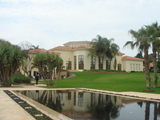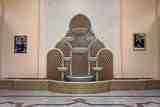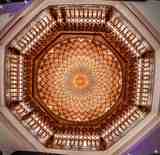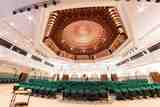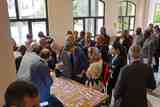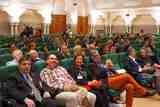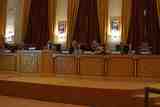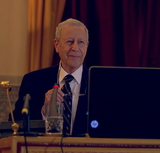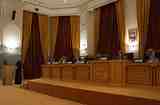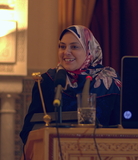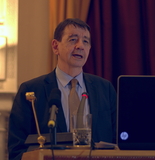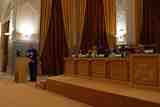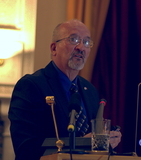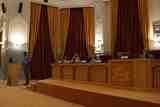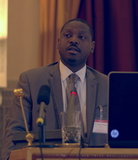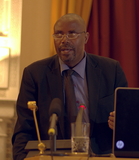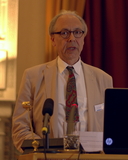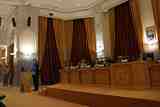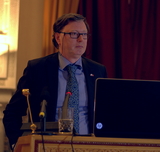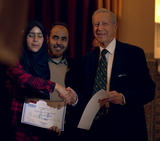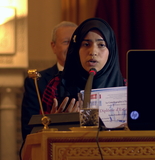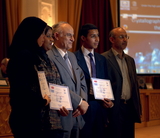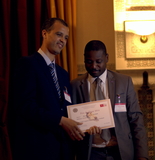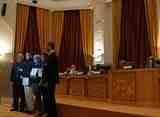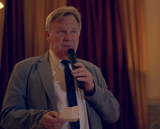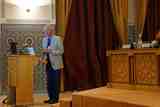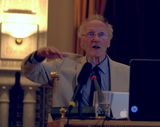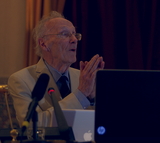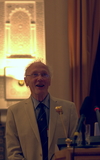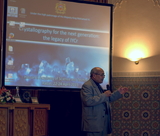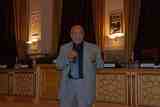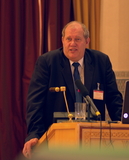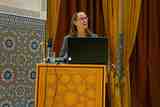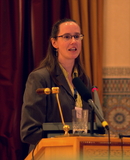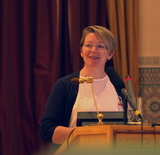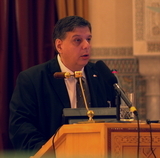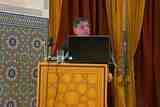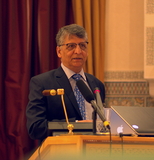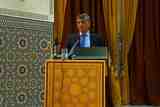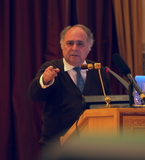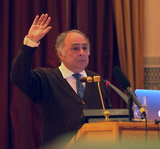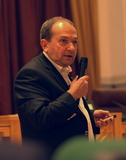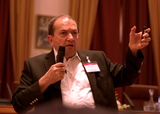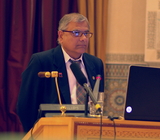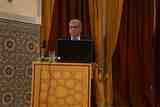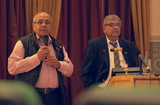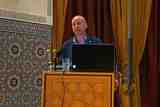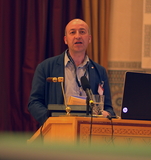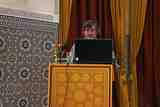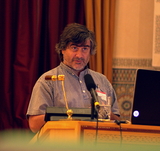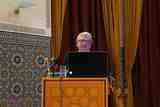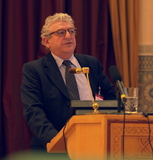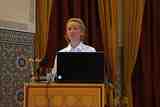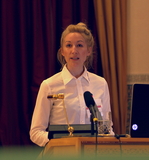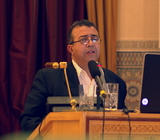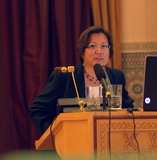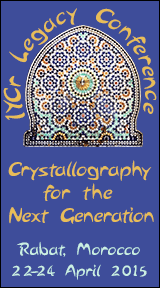 Crystallography for the next generation: the legacy of IYCr
Crystallography for the next generation: the legacy of IYCr
Under the High Patronage of the King Mohamed VI
Jointly Organized by:
- International Union of Crystallography
- Moroccan Crystallographic Association
With the auspices and the support of:
- UNESCO, United Nations Educational, Scientific and Cultural Organization
- ICSU ROA, International Council for Science - Regional Office for Africa
- TWAS, The World Academy of Science
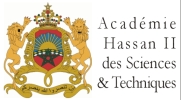 |
Venue: Hassan II Academy of Science and Technology, Rabat, Morocco Dates: 22-24 April 2015 |
 Download the resolution in PDF format (last version: 25 July 2015)
Download the resolution in PDF format (last version: 25 July 2015)
IYCr Legacy resolution
The conference "Crystallography for the next generation", held in Rabat, Morocco in April 2015, under the High Patronage of His Majesty King Mohamed VI, reviewed the accomplishments achieved during the International Year of Crystallography 2014, with a forward-looking focus on how to sustain momentum and build on success.
The President of the IUCr, the Director of the Science Policy and Capacity Building Division of UNESCO, the President of the World Academy of Science and the Director of the International Council for Science-Regional Office for Africa signed a letter of commitment. This letter is published below.
 |
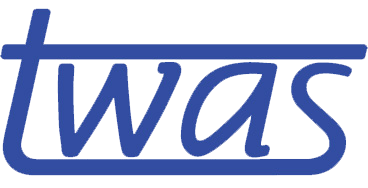 |
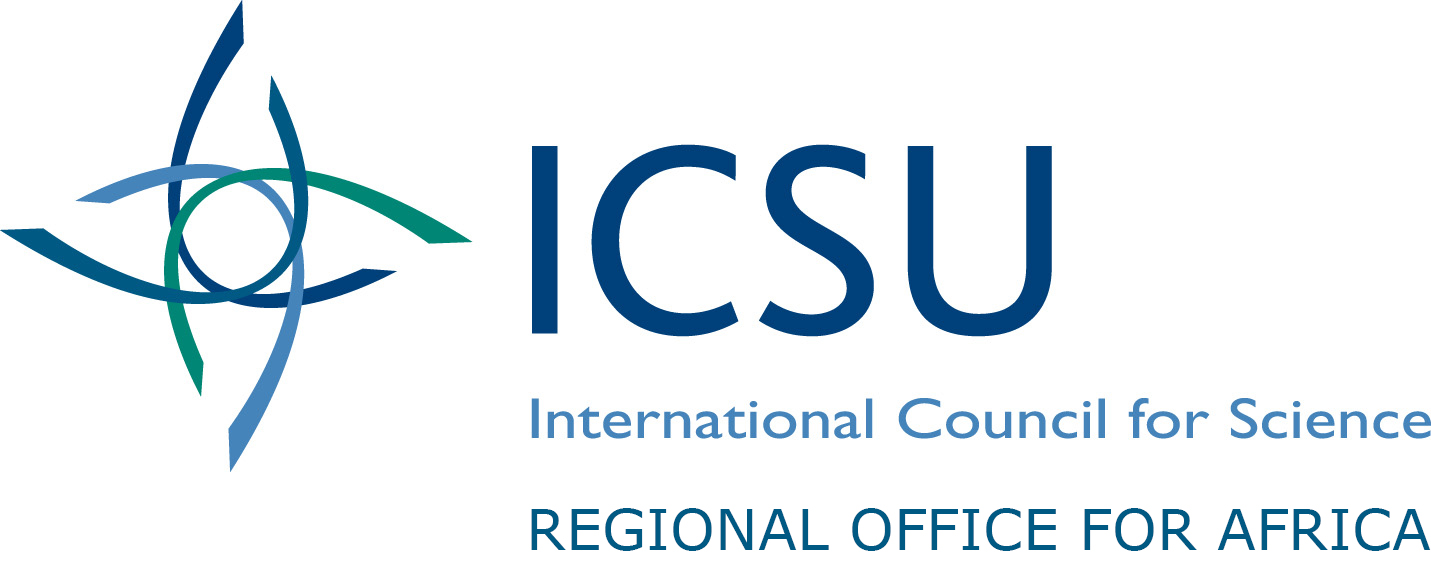 |
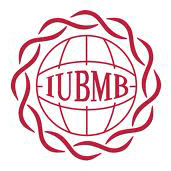 |
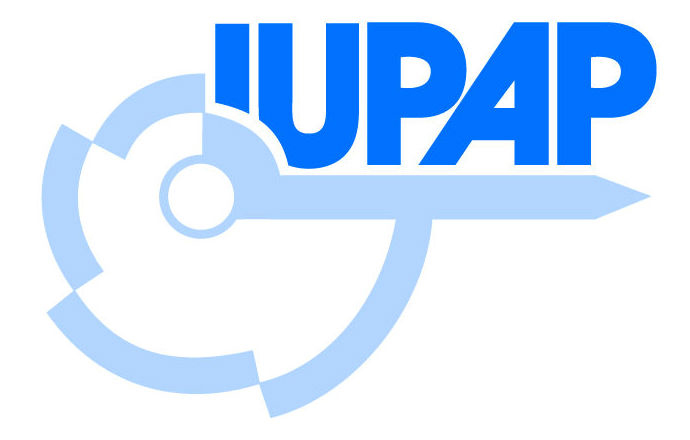 |
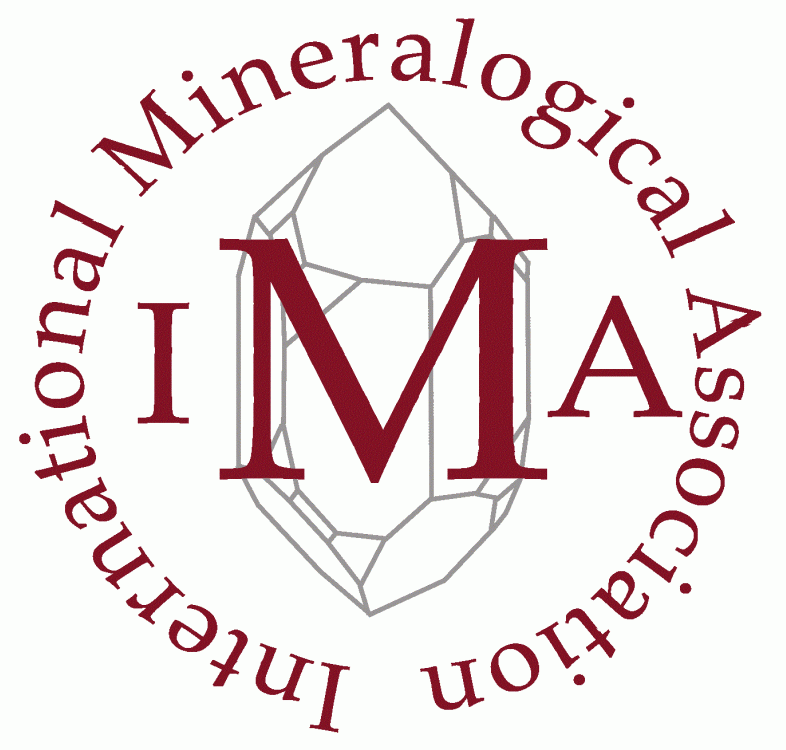 |
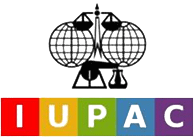 |
Crystallography for the next generation
24th April, 2015
In January 2014, the United Nations Educational, Scientific and Cultural Organization (UNESCO) and the International Union of Crystallography (IUCr) launched a number of activities to support the United Nations Resolution A/RES/66/284 of 3 July 2012 proclaiming the International Year of Crystallography.
The significance of the International Year was summarised in a booklet entitled 'Crystallography matters!', distributed worldwide in 16 different languages. Over the course of the year, hundreds of activities, initiatives and publications brought the importance of crystallography to new audiences, actively trained new crystallographers, and raised the profile of a science that is central to so much of our understanding and interaction with the world around us.
The conference "Crystallography for the next generation", held in Rabat, Morocco in April 2015, under the High Patronage of His Majesty King Mohamed VI, reviewed with pride the accomplishments achieved during the International Year, with a forward-looking focus on how to sustain momentum and build on success. At a time when scientific endeavour is critical for societal benefit and the importance of crystallography is greater than ever, crystallography remains a science that still has lower visibility than it should.
We, the undersigned, therefore commit:
1. to enhance the stature of crystallography
- by maintaining close liaison and representation between our individual organisations
- by collaborating on relevant programmes of science policy at regional, international and global scales
- by forging closer links between the IUCr and other International Scientific Unions
- by encouraging the recognition of crystallography as an essential component of physics, materials science, chemistry and structural biology, and of its inclusion in curricula for secondary and tertiary-level education
- by continuing to protect the integrity of science through publication of peer-reviewed journals and reference works of the highest quality;
2. to build capacity in developing regions of the world
- by continuing implementation of the OpenLabs and related training initiatives
- by coordinating strategic projects based on available funds and resources, such as the IUCr "Crystallography in Africa" and the IUCr-ICSU "Building Science Capacity in Africa via Crystallography" programmes, and supporting similar initiatives in Latin America and South-East Asia
- by encouraging talented students to take advantage of opportunities such as the TWAS Fellowships for Research and Advanced Training
- by continuing to transfer expertise through Visiting Professorship programmes and regional schools or workshops
- by working to reduce barriers to the free movement of scientists;
3. to extend further the public understanding of science in general and crystallography in particular
- by maintaining and expanding educational and public awareness materials and making them freely available in many languages
- by direct engagement of practising crystallographers with active school outreach programmes such as UNESCO Associated Schools Network
- by ongoing development of local crystal-growing activities for schoolchildren and the permanent establishment of a global coordination;
and we call upon our associates, scientific practitioners and educators worldwide to join our organisations in these efforts to sustain and build on the momentum of the International Year of Crystallography in the spirit that now "Crystallography matters ... more!"
Marvin L. Hackert President, International Union of Crystallography, IUCr
Maciej Nalecz Director, Division of Science Policy and Capacity Building, UNESCO
Romain Murenzi Director, The World Academy of Sciences, TWAS
Edith Madela-Mntla Director, ICSU Regional Office for Africa, ICSU-ROA
Gregory A. Petsko President, International Union of Biochemistry and Molecular Biology, IUBMB
Bruce H.J. McKellar President, International Union of Pure and Applied Physics, IUPAP
Sergey V. Krivovichev President, International Mineralogical Association, IMA
Mark C. Cesa President, International Union of Pure and Applied Chemistry, IUPAC
Click here to see/hide list of private signatories supporting this resolution. Fill in the form below to add your name to this list.
We, the undersigned, endorse the actions and goals set out in the IYCr2014 Legacy Resolution.
[279 individual signatories]
Che Randy Nangah PhD Student University of Yaounde I
Hemanta R Naik B.E., Bangalore, India. Reached the unreached.
P. K. Yuldashev Prof. Dr. Institute of the Chem. of Plant Subs. Academy of Sciences of Uzbekistan
V.M. Malikov Prof. Dr. Institute of the Chem. of Plant Subs. Academy of Sciences of Uzbekistan
Mohammed TIHTIH crystallography DR TISSI IGHZERANE RIBATE EL KHIER ADOR crystallography
Emanuela Schingaro Associate Professor Department of Earth end Environmental Sciences
Alen Hadzovic Department of Physical and Environmental Sciences, University of Toronto Scarborough
M G Selvi Library In-charge Guindy Campus Library, University of Madras History of Crystallography is Crystallography itself
Dr. Madan Kumar S Scientific Officer PURSE Lab, Mangalore University, Mangalore, India
Contarino Rosario Via Ingegnere, 59 - 95125 Catania (Italy)
S. Natarajan Senior Professor(Retd), School of Physics, Madurai Kamaraj University, Madurai-625 021, India.
Cem Eren Özbilgin M.Sc Student Anadolu University
Antra Chatterjee Research scholar Flat no. 29, B31/32, Vishnu Bhavan, Lanka Students interested in learning crystallography should be given scholarship to travel and learn the technique in world leading crystallography labs
Lars Peters Akad. OR Institut für Kristallographie, RWTH Aachen University, Germany
PILAR GÓMEZ SAL DEPARTAMENTO DE QUÍMICA INORGÁNICA.UNIVERSIDAD DE ALCALÁ. SPAIN
Yvens Chérémond Director of the department 270 Angle Rue Mgr Guilloux et Joseph Janvier I must relay this the UNESCO representent in my country Haiti for more information about opportunity. Could you help?
Michael Dacombe International Union of Crystallography, Chester, UK
MARTIN GUEVARA MARTINEZ Empleado Gobierno TIZOC No. 5 Bo. San Juan San Luis Tlaxialtemalco, Xochimilco D.F CP. 16610 el papel de la cristalografia juega un importante papel en vida del ser humano, desde el ADN hasta los Cristales de naica.
André Vitor Chaves de Andrade Professor Universidade Estadual de Ponta Grossa - Departamento de Física - Paraná - Brazil
Juan Martín De Paoli Docente Investigador INFIQC (CONICET-UNC) - Departamento de Fisicoquímica, Facultad de Ciencias Químicas, Universidad Nacional de Córdoba. Córdoba, Argentina. Asociación Argentina de Cristalografía (AACr). Latin American Crystallographic Association (LACA).
David Marikah M.Sc in Chemistry student P.O. BOX 2459 Embu Kenya
Helio Salim de Amorim Professor Institute of Physics, Federal University of Rio de Janeiro, Rio de Janeiro/Brazil
Catalina Ruiz-Pérez Full Professor Dpto de Física, Facultad de Ciencias, Universidad de La Laguna, Tenerife, Spain
Renata Diniz Professor R. José Lourenço Kelmer s/n, Campus Universitário. Bairro São Pedro. Juiz de Fora, MG, Brazil
Evelyn Moreno-Calvo Senior postdoc C/ Ferran Romeu 43 A CP 08172 Sant Cugat del Vallès Barcelona, Spain
Pilar García Orduña Instituto de Síntesis Química y Catálisis Homogénea (ISQCH. CSIC-Univ. Zaragoza, Spain)
Mois I. Aroyo University of the Basque Country (EHU/UPV), Spain
Isabel Lopez Valero Ctra. de Cuenca, 3 46143 Torrebaja (Valencia) Spain
Odon Arjona Professor Universidad Complutense de Madrid, Spain
Isabel Padilla CENIM-CSIC, Spain
Sol López-Andrés Professor Facultad de Ciencias Geológicas. Universidad Complutense de Madrid. Spain
Enrique Gutiérrez Puebla Researcher Instituto de Ciencia de Materiales de Madrid-CSIC. Sor Angela de la Cruz 3. 28049 Madrid. Spain.
Angeles Monge Professor of Pesearche Instituto de Ciencia de Materiales (ICMM), Consejo Superior de Investigaciones Científicas (csic), Spain
Miquel Àngel Cuevas-Diarte Emeritus Professor Universitat de Barcelona (Spain)
Miguel Quiros Olozabal Universidad de Granada, Spain
Rosario Pedrero Marín University of Extremadura, Elvas Avenue. E-06006. Badajoz (Spain)
Eva Fernandez Zapico University of Oviedo - Faculty of Chemistry - C/ Julian Claveria, 8, Spain
Javier Cepeda Ruiz Applied Chemistry Department, Chemistry Faculty, University of the Basque Country, Spain
Berta Covelo Universidade de Vigo (Spain)
Jose A. Gavira Research Scientist Av. Las Palmeras, 4. Armilla, 19100-Spain, LEC, IACT, CSIC-UGR
Joseba Orive Postdoctoral researcher Universidad de Chile
Duane Choquesillo Lazarte Laboratorio de Estudios Cristalográficos. CSIC-Universidad de Granada, Spain
D. G. Franco Bajas Temperaturas - Centro Atomico Bariloche, Argentina
Alicia Trigubo Juan Bautista de La Salle 4397, Argentina
Yara pHD student University Federal of Ceara, Brazil
Beatriz Pinheiro Bezerra Ph.D student Federal University of Ceara, Brazil
Rodrigo Ichikawa Instituto de Pesquisas Energéticas e Nucleares - Universidade de São Paulo - Brasil
Patricia Rosa Feliciano Post-Doc Massachusetts Institute of Technology
Juanma García-Ruiz Laboratorio de Estudios Cristalográficos. CSIC-Universidad de Granada, Spain It was great. We need to do even better
Danilo Oliveira de Souza PhD fellow Université Lille 1, France
Horacio Canepa Researcher CONICET-CITEDEF-UNIDEF Juan B de La Salle 4397 - Villa Martelli 1603 - Buenos Aires - ARGENTINA
Marcia C.A. Fantini Full Professor-Crystallography Lab Coordinator Physics Institute/ Sao Paulo University (IFUSP), Brazil President of the Brazilian Crystallographic Association (ABCr) and Provisory President of Latin American Crystallographic Association (LACA)
M. Cecilia Blanco INFIQC - Facultad de Ciencias Químicas - Universidad Nacional de Córdoba
Irineu Mazzaro Professor Department of Physics, Federal University of Paraná - UFPR, Paraná, Brazil
Marco Túlio Raposo Associate Professor ( retired) Natural Sciences Departmente, Federal University of São João Del Rei -MG- Brazil
Susana Larrondo UNIDEF-MINDEF-CONICET - Argentina
Gabriela Aurelio Researcher Centro Atómico Bariloche The talks I gave at primary schools to young children last year inspired me to undertake a Science Workshop for school-graders... thanks IYCr2014!
Felipe Antunes Calil PhD Student Faculdade de Ciências Farmacêuticas de Ribeirão Preto, SP, Brasil
Wagner da Nova Mussel Associate Professor Universidade Federal de Minas Gerais - Departamento de Química - ICEx/UFMG
Joane Kathelen Rustiguel Bonalumi post-doc Faculdade de Ciências Farmacêuticas de Ribeirão Preto, SP, Brasil
Claudia Cristina Gatto Professor LASIC - UnB- IQ
Maria Cristina Nonato Associate Professor University of São Paulo
Adriana Serquis Researcher CONICET - Centro Atómico Bariloche - AACr - Argentina
Alan Silva de Menezes Professor Department of Physics, Federal University of Maranhão, São Luis, Brazil
José Luís Passmai Junior Professor Universidade Federal do Espírito Santo
Oscar E. Piro Full Professor UNLP, Research Fellow of CONICET Departamento de Física, Ftad. de Ciencias Exactas, Univ. Nacional de La Plata (UNLP) e Instituto de Fisica de La Plata (CONICET)
Ana Carolina Mafud Post doctoral researcher Instituto de Física de São Carlos, Universidade de São Paulo, São CArlos, SP, BRAZIL
Alejandro Pedro Ayala Professor Universidade Federal do Ceará
Nivaldo L Speziali associate professor, UFNG/Brazil
Luis Ielpi PhD Principal Investigator Fundación Instituto Leloir
Javier Ellena Profesor São Carlos Institute of Physics, University of Sâo Paulo, São Carlos, SP, Brazil
Sergio Baggio Professor (Retired) A. Brown 1803 Puerto Madryn Chubut ARGENTINA
Dra. Maricel Rodriguez Postdoctoral Centro Atómico Constituyentes (CNEA-CAC) Bs As Argentina
Raúl Bolmaro Group Leader, Deputy Director Ocampo y Esmeralda
Griselda Narda Professor National University of San Luis, Argentina
Sebastian Klinke Researcher Fundacion Instituto Leloir - CONICET, Buenos Aires, Argentina
Santiago J. A. Figueroa Researcher Rua Giuseppe Maximo Scolfaro 10000- Campinas (SP) - Brazil/Centro Nacional de Pesquisa em Energia e Materiais (CNPEM) - Laboratório Nacional de Luz Síncrotron (LNLS)
Vanesa Contini UNLaR - Luis de la Fuente s/n
Paula Abdala ETH Zürich, Switzerland
Iris Torriani Associate Professor of Physics Condensed Matter Physics Dept., Physics Institute - University of Campinas, São Paulo, Brazil
Valeria C. Fuertes Investigadora-CONICET INFIQC-CONICET, Dpto. de Fisicoquímica, Facultad de Ciencias Químicas, Universidad Nacional de Córdoba, Córdoba, Argentina.
Javier Santisteban Researcher Centro Atomico Bariloche, CNEA, CONICET e Instituto Balseiro, Argentina
Patricia Mateos Group Leader of Outreach Activities Bariloche Atomic Center, Bariloche, Argentina
Diego Gernán Lamas CONICET-Universidad Nacional de San Martín, Argentina. Argentinian Association of Crystallography (AACr). Latin American Crystallographic Association (LACA)
Sebastian Suarez Graduate teaching assistant - Posdoctoral position Universidad de Buenos Aires y Asociación Argentina de Cristalografía
Dr. Arjun Kumar Mishra Research Associate Unesco-Regional Centre for Biotechnology, Faridabad, India "Crystallography matters ... more!"
Sergey Belyakov leading researcher Latvian Institute of Organic Synthesis
Michal Sabat Department of Materials Science and Engineering, University of Virginia, Charlottesville, VA22904, USA
Mariusz Jaskolski Professor Department of Crystallography, A.Mickiewicz University, Poznan, Poland
Martin Martinez-Ripoll Research Professor CSIC, Spanish National Research Council
Ranjana Rani Das Research Scholar Physics Indian Institute of Technology, Madras
D. Aravindaraja TEACHER,DEPARTMENT OF EDUCATION PUDUCHERRY NO-20,SCHOOL STREET MAIN ROAD,VRM THOTTAM, GOVINDASALAI,PUDUCHERRY
Franco Rolfo University of Torino
Giovanni Ferraris Emeritus professor Dipartimento di Scienze della Terra, Università di Torino I am greatly disappointed by the fact that Crystallography has not been mentioned as essential component of Mineral Sciences (Minefralogy is the cradle of Crsytallography).
Miguel Gregorkiewitz prof University of Siena, Italy
Marta Ferraroni Research Associate Department of Chemistry, University of Florence, Firenze, Italy
Consiglia Tedesco Assistant professor University of Salerno
Domenica Researcher Dipartimento di Chimica, Università di Torino, Via P. Giuria 7, 10125 Torino
Marco Bruno Associate Professor University of Turin
Massimo Moret associate professor University of Milano Bicocca - Department of Materials Science - Via R. Cozzi 55, Milano (Italy)
Giovanni Luca Cascarano Researcher CNR-IC, Bari, Italy
Maria Lacalamita Dipartimento di Scienze della Terra e Geoambientali, Università degli Studi di Bari "Aldo Moro"
Filomena Sica Associate professor Chemical Sciences Department, University of Naples Federico II
Davide M Proserpio Associate Professor Università degli Studi di Milano, Dipartimento di Chimica, Milano, Italy
Andrea Lausi Elettra Sincrotrone Trieste
Doriano Lamba Deputy Head, Senior Scientist Istituto di Cristallografia - CNR, Trieste Outstation, Area Science Park - Basovizza S.S. n°14 Km 163,5 I-34149 Trieste (Italy)
Michele Saviano Director Institute of Crystallography, CNR, Italy
Merlino Stefano Past Professor of Crystallography, University of Pisa Dipartimento di Scienze della Terra, Via S. Maria 53, I-56126 Pisa (Italy)
Luca Bindi Associate Professor Department of Earth Sciences, University of Florence, Italy
Claudia Graiff Associate Professor Università di Parma , Dipartimento di CHIMICA Viale delle Scienze 17/A 43100 PARMA
Carlo Mealli Member of the CNR Scientific Council CNR ICCOM, Via Madonna del Piano 10, 50019 Sesto Fiorentino, Italia
Enrico Mugnaioli Researcher Department of Physical Sciences, Earth and Environment, University of Siena, Via Laterino 8, 53100 Siena, Italy
Monica Dapiaggi associate professor Università degli Studi di Milano, via Botticelli 23 Milano
Roberto Fornari Professor Dept. of Physics and Earth Sciences, Univ. of Parma (Italy) President Intern. Organisation for Crystal Growth (IOCG)
Pietro Roversi Research Associate University of Oxford, Oxford, England, United Kingdom Long Life Crystallography!
Sabrina Nazzareni Dept. Physics and Geology University of Perugia Italy
Andrea Ienco Researcher CNR-ICCOM, Italy
Emanuele Costa Researcher Università di Torino, Italy
Piera Benna Associate Professor University of Torino
Massimo Nespolo Professor Université de Lorraine, Nancy, France
Massimiliano Perduca Assistant professor University of Verona - Strada le Grazie, 15 - 37134 Verona
Collet Eric Professor University Rennes 1
Gennaro Ventruti Researcher università di Bari
Donatella Armentano Permanent researcher University of Calabria
Giuseppe Zanotti Professor Department of Biomedical Science - University of Padua, Italy
Marco Cammarata Researcher CNRS, University of Rennes 1
Andy Stewart Senior Researcher University of Limerick
Martin Stoermer Scientist University of Queensland
Remesh H M.Sc. Student Department of Chemistry, University of Kerala, Kariavattom Campus, Trivandrum, Kerala 695581 I am currently doing research in crystallography in conjunction with electrochemistry. I came to realize about the importance and vast world of solid state electrochemistry then. in this regard, owing to the importance of this field at present and in future, I fully support the activities of IUCr.
Breogan Pato Doldan Postdoc University of Bergen
James (Jim) Simpson Emeritus Professor University of Otago, Dunedin, New Zealand
Hocine Merazig Professor, Head of UR-CHEMS Unité de recherche CHEMS, Frères Mentouri University
Andreas Schönleber Laboratory of Crystallography, University of Bayreuth, 95440 Bayreuth, Germany
Hammouda Chebbi Assistant Professor Preparatory Institute in the Studies of Engineers of Tunis, University of Tunis, Street Jawaher Lel Nehru 1089 Montfleury - Tunis , Tunisia,
Dr. Amit Das Scientist Protein Crystallography Section, SSPD, Bhabha Atomic Research Centre, Mumbai-400085, Maharashtra, India.
Sylvain Bernès Instituto de Física "Luis Rivera Terrazas", BUAP, Puebla, Mexico
William Harrison Senior lecturer University of Aberdeen, Scotland
Matthew P. Blakeley Scientist Institut Laue-Langevin
Amani Direm PhD student, researcher LASPI2A, University of Khenchela, Algeria
Abdelmalek Thalal PROFESSOR CADI AYYAD UNIVERSITY - MARRAKECH - MOROCCO
Rebecca Yip PhD Student HKUST
Shahobiddin M. Adizov Senior researcher Institute of the Chemistry of the Plant Substances of Academy of Sciences of the Republic of Uzbekistan many thanks all organizers!
Cheriti Abdelkrim researcher, director of POSL laboaratory Phytochemistry & Organic Synthesis Laboratory, 08000 Bechar Algeria
Antonio L. Llamas-Saiz Unidade de Raios X. RIAIDT. Universidade de Santiago de Compostela. Spain
S. Krishnaswamy Retired Senior Professor, School of Biotechnology, Madurai Kamaraj University, India 2/154 south fifth street, Palkalainagar east, madurai 625021, India
Rosario Contarino private technical supervisor Catania (Italy)
Bun Kim Ngun Deputy Head of Department Department of Geo-resources and Geotechnical Engineering, Institute of Technology of Cambodia, Phnom Penh, Cambodia / Ph.D I strongly support IUCr acitivities and thanks to IUCr for the first OpenLab in Cambodia in 2014.
Aziz Kheireddine technico sales RADACO
Cora Lind-Kovacs Professor The University of Toledo, Toledo, OH 43606, USA
Judith Howard Research Professor Durham University
Colin Groom Executive Director Cambridge Crystallographic Data Centre
Martin Fark co CEO STOE
Friedemann Hahn Hilpertstr. 10, 64295 Darmstadt, Germany
Maria Gorna assistant professor University of Warsaw
Tea Pavkov-Keller Seniour researcher ACIB co. University of Graz, 8010 Graz, Austria
Nives Ivic postdoc Gene Center Lmu
Hradil Klaudia head of x-ray lab Vienna University of Technology, x-ray center
Silvia Onesti Head of Structural Biology Elettra - Sincrotrone Trieste SCpA
Mohammed Said Mohammed PhD University of Oviedo
Gerlind Sulzenbacher Research Engineer AFMB CNRS/AMU, Marseille, France
Jordi Bella Lecturer Faculty of Life Sciences, Universtty of Manchester
Marija Luic Head of the Labratory Sisiceva 26, 10010 Zagreb, Croatia
Janusz Lipkowski professor Cardinal Stefan Wyszynski University in Warsaw
Till Samtleben Sales Stoe & Cie, Darmstadt, Germany
Bouacida Sofiane Constantine and OEB University
Vania Andre Postdoc Instituto Superior Tecnico
M. Teresa Duarte Full Professor Instituto Superior Tecnico, Lisbon Portugal
Van Meervelt Luc GST IUCr KU Leuven Belgium
Radomir Kuzel Professor Charles University in Prague, Faculty of Mathematics and Physics, Prague, Czech Republic
Marijana Dakovic Asst Prof University of Zagreb, Crotia
Aleksandar Visnjevac rudjer boskovic institute, zagreb, croatia
Martin U. Schmidt Professor Goethe-University, Max-von-Laue-Str. 7, D-60438 Frankfurt am Main, Germany
Hodeau Jean Louis CNRS Directeur de Recherche Institut Neel CNRS 38042 Grenoble France
Chiara Massera Associate Professor University of Parma, Dpt. Chemistry, Viale delle Scienze 17/A 43123 Parma, Italy
Leigh Rees 2DSINTHETA
Jose Fernandes Post-doc Universita dell' Insubria
Masaki Takata Professor Tohoku University
Alicja Rafalska-Lasocha Senior Scientist Jagiellonian University, Kraków, Poland IYCr2014 spread the importance of crystallography among not only scientific, but also general public.
Amber L. Thompson Chemical Crystallography, University of Oxford
Davide Viterbo Torino Italy
Harriet Konishi Oxford University Press, Clarendon Road, Oxford UK
Pascal Roussel Research director UCCS - CNRS UMR 8181 - Villenueve dAscq - France
Alexander Wlodawer Lab Chief National Cancer Institute, NIH, Frederick, MD, USA
Mitchell Guss Professor Emeritus University of Sydney
Maura Malinska postdok National Cancer Institute, ANL, USA
Chris Frampton Professor Of Structural Chemistry Brunel University
Marcin Stachowicz PhD student University of Warsaw Chemistry Department
Gilberto Artioli padova long live crystallography
Sameer Velankar Team leader Protein Data Bank in Europe, embl-european bioinnformatics institute
Alessia Bacchi professor University of Parma
Mike Glazer Emeritus Professor of Physics Oxford University, Physics Department The IYCr was incredibly successful and we now need urgently build upon its successes internationally
Serena C. Tarantino Università di Pavia
William Clegg Emeritus Professor Newcastle University
David Walker X-ray Facility Manager University of Warwick
Harry Powell Senior Investigator Scientist MRC-LMB, Cambridge
Andrea Thorn Postdoc MRC-LMB, Francis Crick Av Cambridge CB2 0QH
Orhan Buyukgungor Prof. Dr. Ondokuz Mayis University, Dept. of Physics, Samsun-Turkey. -
Andrius Merkys PhD student Vilnius, Lithuania
Francesco Capitelli Researcher Institute of Crystallography
Bill Duax Teacher Hauptman Woodward MRI
Semën Gorfman Research fellow University of Siegen
Lasocha Wieslaw Faculty of Chemistry, Jagiellonian University
Radoslaw Kaminski Senior Research Associate Department of Chemistry, University of Warsaw
Paul Raithby Professor of Chemsitry Univrsity of Bath
Elspeth Garman Professor, PI, responsible for Department's Public Outreach Programme Department of Biochemistry, University of Oxford, UK
Alexander J. Blake Professor School of Chemistry, The University of Nottingham
Tony Savill CEO Molecular Dimensions Ltd
Anthony Linden Professor Zurich, Switzerland
Sine Larsen Professor University of Copenhagen, Universitetsparken 5, 2100 Copenhagen
Carlotta Giacobbe Postdoc ESRF European Synchrotron Radiation Facility
Simona Galli Associate Professor Universita' dell'Insubria, via Valleggio 11, 22100, Como, Italy
Depmeier Wulf Professor emeritus Kiel University
Rosanna Rizzi Researcher Institute of Crystallography (IC-CNR). Bari, Italy
Moliterni Anna Researcher IC-CNR, Bari Italy
Terese Bergfors research engineer Uppsala University
Tiziana Boffa Ballaran Scientific staff Bayerisches Geoinstitut, University of Bayreuth
Luciano Marchio' Prof. Dipartimento di Chimica, Universita' di Parma
Annalisa Guerri Dept. Chemistry - University of Florence
Elena Boldyreva Professor Novosibirsk State University
Eliska Skorepova PhD student UCT Prague
Manfred Weiss Senior Scientist Helmholtz-Zentrum Berlin
Amy Sarjeant Outreach & Education Manager CCDC
Josefina Perles Crystallographer, Director of SCXRD Lab Universidad Autonoma de Madrid Crystallography is very important for society, and we crystallographers need to make sure that they know it!
Siegbert Schmid The University of Sidney
Krzysztof Wozniak HEAD OF RESEARCH LABORATORY CHEMISTRY DEPARTMENT, WARSAW UNIVERSITY, PASTEURA 1, 02093 WARSZAWA, POLAND
Dave Billing Prof University of The Witwatersrand, South Africa
Karl Wilhelm Tornroos Professor University of Bergen
Paul Thaw European Sales Manager TTP Labtech Ltd
Hiroyuki Kanda Manager of the Single Crytal Group 3-9-12 Mtsubara-chou, Akishima-shi, Tokyo 196-8666, Japan
S.J. Maginn CCDC, 12 Union Road, Cambridge CB2 1EZ, UK
Eleonora Conterosito post doc Universita del Piemonte Orientale
Marco Milanesio Researcher Universita' del Piemonte Orientale
Manfred Wildner Assoc. Prof. Institut fuer Mineralogie und Kristallographie, Universitaet Wien
Gautam R. Desiraju Professor Indian Institute of Science
John R Helliwell Emeritus Professor University of Manchester, UK Thankyou IUCr for the wonderful IYCr initiative and to all concerned for organising the wide diversity of events.
Gligor Jovanovski Retired Professor Institute of Chemistry, Faculty of Science, Arhimedova 5, 1000 Skopje, Republic of Macedonia
Amalija Golobic assistant professor Faculty of Chemistry and Chemical Technology, University of Ljubljana, Vecna pot 113, 1000 Ljubljana, Slovenia
Galina Kuzmicheva Prof, Head of X-Ray Lab Lomonosov State University of Fine Chemical Technology, Department Material Science and Technology of Functional Materials and Snructures, Vernadsky pr 86, Moscow,119571, Russia
Dritan Siliqi Institute of Crystallography -CNR . Via Amendola, 122/O. Bari, Italy
Popov Alexander scientist ESRF-The European Synchrotron 71, Avenue des Martyrs Grenoble, France
Gabin Gbabode Associate Professor Normandie Université, Université de Rouen, Laboratoire Sciences et Méthodes Séparatives (SMS), 1 rue Lucien Tesnière F-76821 Mont-Saint-Aignan, France
Simon Coles Associate Professor University of Southampton
Fernando J. Lahoz Director Institute for Chemical Synthesis and Homogeneous Catalysis (ISQCH), CSIC/University of Zaragoza, SPAIN Without taking proper relevance, Crystallography is an esential component of Science and Technology progress.
Cinthia Antunes Correa Prague, Czech Republic
Emmanuel Wenger X-ray facility Engineer Université de Lorraine-CRM2 Laboratory
Burak Veli Kabasakal Imperial College London
Shobha R Prabhu Assistant Professor Dept. of Physics, NMAM Institute of Technology, Nitte, Udupi District, Karnataka, India.
Tamtsilia Nabila Sulfi Student Kookmin University
Septy Sara Janny Sinaga Student Kookmin University
Ilia Guzei University of Wisconsin Madison
Piero Macchi group leader Department of Chemistry and Biochemistry, University of Bern
Andrea Sharpe Promotions Officer IUCr
Daniel Rabinovich Professor The University of North Carolina at Charlotte Legacy activities are as important as those that took place during the IYCr.
Prerana Pai Student Delhi Private School, Sharjah, United Arab Emirates
Santiago Garcia-Granda Professor University of Oviedo, Asturias, Spain 2014 IYCr was an unique occasion to honoring the founders, educate society and inspire new generations of crystallographers. The beginning of a new era of crystallography.
Robert Krickl Vienna, Austria
Erivaldo Vieira da Silva Professor Garanhuns, PE- BRA Sou professor de Química na Cidade de Garanhuns, no estado de Pernambuco no Brasil. Estou desenvolvendo levantando estudos sobre a Cristalografia e os cristais.
Krzysztof Zagórski PhD Candidate Gdańsk University of Technology, Poland
Cristóbal Verdugo Postdoc researcher Spanish National Research Council - CSIC
Dr. Nzikahyel Simon Faculty and Frontier Crystallographer Department of Chemistry, university of Uyo, Uyo, Nigeria Its a very welcome idea/project. Nigeria must be part of this. During the IYCr2014 clossing Ceremony in Morocco, I promised to initiate the Nigeria Association of Crystallographers. Its in top gear. Carry us along.
Worawat Wattanathana Student Department of Chemistry, Faculty of Science, Kasetsart University
Vanesa Contini Delegada Regional -Asociación Argentina de Cristalografía Las Acacias 1801
Javier Ellena Profesor São Carlos Institue of Physics - University of Sao Paulo - São Paulo - Brazil
Thomas Terwilliger Vice President American Crystallographic Association
Juliette Pradon Research & Applications Scientist Cambridge Crystallographic Data Centre
Dr Georgina Rosair Scientific Officer, Secretary of the European Crystallographic Association Heriot Watt University Edinburgh UK 2014 was a wonderful year for building bridges across scientific disciplines, the general public and countries using crystallography
Peter Strickland Executive Managing Editor IUCr, 5 Abbey Square, Chester, UK
Jill Bradshaw Managing Editor of Acta B International Unionof Crystallography
David R. Rose Professor University of Waterloo
Mattia Giannini 115 Rue des Teinturiers, Amiens, France
Basir PhD Islamia University, Bahawalpur, Pakistan Tnx
Ms Deborah Austin Owner, Manager of Retail Shop Crystal Labyrinth, Ironbridge, Shropshire, England I will always promote the science of gems & crystals in order to educate all youngsters & adults alike.. let us no longer be ignorant of foolish beliefs, but follow the wisdom of our great scientists.
Che Randy Nangah Graduate student University of Buea, Cameroon
Mariya al-Rashida Assistant Professor Department of Chemistry, Forman Christian College (A Chartered University), Lahore, Pakistan
Haib Boughzala Professor - Vice President TCA Faculty of Science Tunis - Tunisian Crystallographic Association
Marv Hackert Professor Dept. Molecular Biosciences, University of Texas at Austin
Brian McMahon International Union of Crystallography, Chester, UK
Michele Zema IUCr, UK
Danny Hoare High school student Alun School, Mold, Wales
Programme
Download the programme in PDF format
Wednesday, 22 April
17:00-17:45 Opening Ceremony
Chair: Abdelmalek Thalal, President of MCA and Chair of the conferenceWelcome speeches by:
- Minister of Higher Education and Scientific Research of Morocco
- Minister of National Education and Vocational Training of Morocco
- Minister of Crafts and Social Economy of Morocco
- Perpetual Secretary of the Academy of Science and Technology of Morocco
- Dr Jean-Marc Berthon, Councilor for the Cultural Action and Cooperation, French Embassy in Morocco
- Prof Marvin L. Hackert, IUCr President | Presentation
 (1.11 MB)
(1.11 MB) - Prof Maciej Nalecz, Director of the Division for Science Policy and Capacity Building at UNESCO
- Dr Daniel Nyanganyura, ICSU Regional Office for Africa
- Dr Eric Hovestreydt, Delegate of Bruker company, premium sponsor of the conference
17:45-18:15 Presentation of awards
Chair and introductory talk: Luc Van Meervelt, Coordinator of the IYCr2014 worldwide crystal-growing competition | Presentation- IYCr2014 worldwide crystal-growing competition;
- Crystal growing contest organized by the Moroccan Crystallographic Association (MCA), the French Institute in Morocco and the Regional Academy of Education; | Video

- Best PhD thesis in crystallography in 2014 awarded by the MCA and the Council of Presidents of Moroccan Universities.
Awards presented by the Minister of National Education and Vocational Training of Morocco and the Councilor for the Cultural Action and Cooperation, French Embassy in Morocco
18:15-19:00 Opening Lecture
| Ted Janssen (IUCr Ewald Prize 2014) | Crystallography in the 21st century | Abstract | Presentation |
||
|
At the beginning of the 21st century, we can look back on the history, think about the present status and discuss the open problems of crystallography. The talk will start with an overview of the achievements of the past century. Due to the development of new experimental and theoretical tools crystallography has obtained the status of a central science, not only from the intellectual point of view, but also for applications. The knowledge of the structure is essential for the study of physical properties. A brief history of this development will be given with emphasis on new tools, biological systems and aperiodic crystals. Finally a number of open problems will be discussed. (hide | hide all) |
||||
19:00 Welcome cocktail offered by the Hassan II Academy of Science and Technology of Morocco
Thursday, 23 April
08:30-10:30 Session 1: Building capacity in crystallography
Chair: Claude Lecomte | Presentation ![]() (380 kB)
(380 kB)
| 08:30-08:40 | Gautam R. Desiraju, IUCr Immediate Past President | |
(video message) |
||
| 08:40-08-55 | Marvin L. Hackert, International Union of Crystallography, President | Presentation |
| 08:55-09:10 | Andreas Roodt, European Crystallographic Association, President | Presentation |
| 09:10-09:25 | Cora Lind-Kovacs, American Crystallographic Association, Delegate | Presentation |
| 09:25-09:40 | Jennifer L. Martin, Asian Crystallographic Association, Vice President | Presentation |
| 09:40-09:55 | Diego G. Lamas, Latin American Crystallographic Association, Vice President | Presentation |
| 09:55-10:30 | KEYNOTE: Samar S. Hasnain, Bringing nations together | Presentation |
10:30-11:00 Tea/Coffee break
11:00-13:00 Session 2: Symmetry
Chair and introductory talk: Abdelmalek Thalal
| 11:00-11:15 | Abdelmalek Thalal | Introduction | ||
| 11:15-12:00 | KEYNOTE: Denis Gratias | Symmetry and Crystallography | Abstract | Presentation |
|
|
The introduction by Janner and Janssen[1] in the 70s of N-dimensional crystallography for describing incommensurate phases and, later, quasicrystals, has generated an important research activity on the new meaning to give to basic concepts like space symmetries, both orientational and translational. In fact none of the incommensurate phases and quasicrystals show symmetries that superimpose exactly the object onto itself so that this concept should take another signification in these compounds. The present talk will first give a very short reminder of group action theory and its application to N-dimensional crystallography. Then, following Bienenstock and Ewald [2] and more recently Mermin [3], it will be shown that the concept of symmetry in N-dimensional crystallography is much better understood in reciprocal space (where experimentalists usually determine the space group) than in direct space. There, the usual notion of superimposing an object on itself by symmetry is replaced by the more subtle notion of equivalence where two objects are equivalent with respect to a given property if they are undistinguishable under any physical measurements of that property. References |
||||
| 12:00-12:30 | Metin Arik | Mathematical mosaics, Islamic Art and Quasicrystals | Abstract | Presentation |
|
|
|
||||
| 12:30-13:00 | Ashwini Nangia | Polymorphs and cocrystals in pharmaceutical development | Abstract | Presentation |
|
|
School of Chemistry, University of Hyderabad, India About 40% of marketed drugs have low solubility, and almost double that number of drug candidates (80-90%) will fail in late stage R&D pipeline due to poor solubility. A drug's behaviour depends on much more than the molecular structure. This talk will cover solubility improvement strategies based on supramolecular modification of APIs through hydrogen bonding and crystal design.
(1) Solubility Advantage of Amorphous Drugs and Pharmaceutical Cocrystals. Cryst. Growth Des. 2011, 2662-2679. (2) New Polymorphs of Curcumin. Chem. Comm. 2011, 5013-5015. (3) Fast Dissolving Curcumin Cocrystals. Cryst. Growth Des. 2011, 4135-4145. (4) Stable Cocrystals of Temozolomide. Chem. - An Asian J. 2012, 2274-2285. (5) Solid-State Form Screen of Cardiosulfa. Chem. - An Asian J. 2013, 1551-1568. (6) Andrographolide: Solving Chemical Instability and Poor Solubility by Means of Cocrystals. Chem.- An Asian J. 2013, 3032-3041. (7) Eutectics as Improved Pharmaceutical Materials. Chem. Commun. 2014, 906-923. (8) Acemetacin Cocrystals and Salts. IUCrJ 2014, 136-150. (9) A Novel Curcumin-Artemisinin Coamorphous Solid. RSC Adv. 2014, 58357-58361. (10) Salts and Co-crystals of Theobromine. J. Chem. Sci. 2014, 1249-1264. (11) Pentamorphs of Acedapsone. Cryst. Growth Des. 2014, dx.doi.org/10.1021/cg5010424. (12) Preclinical BABE and TOX of Temozolomide-Succinic Acid cocrystal. Curr. Sci., in press. (hide | hide all) |
||||
13:00-14:30 Lunch sponsored by Ministry of Higher Education and Scientific Research of Morocco
14:30-16:30 Session 3: New opportunities in crystallography education
Chair and introductory talk: Michele Zema and Cora Lind-Kovacs
| 14:30-14:40 | Michele Zema | The OpenLab and OpenFactory projects | Presentation |
|
| 14:40-15:00 | KEYNOTE: Gilberto Artioli | OpenLabs in Ghana and Turkey | Presentation |
|
| 15:00-15:20 | Gérard Fauvet (Bruker France) | Travelling lab initiative and other activities in Africa | Abstract | Presentation |
|
|
Bruker enthusiastically supports the IUCr initiatives and activities around IYCr2014 in assisting and organizing OpenLabs and Travelling Labs. It has been a great opportunity to meet many students around our instruments; in particular, the Travelling Lab in Morocco has been very successful thanks to the engagement and the organization of the AMC. Similar initiatives are scheduled in Algeria and Tunisia soon after the Rabat conference. For several years, we have been also proud of our co-work with IUCr, through its "Crystallography in Africa" initiative, for organizing the free supplying and commissioning of diffractometers to some Sub-Saharan Universities. Bruker and the IUCr are fully engaged together on several projects that we do intend to realize; our company kept numerous pre-owned instruments in good shape which could satisfy several laboratories ready for receiving such equipment, and we would be happy to evaluate any further opportunities. We do want that the above-mentioned diffractometers are fully accessible to students, in order to give them an experience that will undoubtedly be very rewarding for their future career and especially toward industrial analysis. (hide | hide all) |
||||
| 15:20-15:35 | Dubravka Sisak Jung (Dectris) | Open Factory: Detecting the future | Abstract | Presentation |
|
|
Although the arrival of new materials and modern instrumentation significantly broadened the field of crystallography, it also created a significant regional gap in crystallography education. While these advances were successfully exploited in developed countries, they caused developing and less-privileged countries to lag even further behind. These differences could only be overcome with the joint forces of academia, instrumentation manufacturers and large-scale facilities. DECTRIS, a leading manufacturer of X-ray detectors, contributed to this initiative twofold: with financial support of crystallography teaching, enabling admission-free participation, and by addressing the needs of a specific region, with a special focus on Africa. The outcomes of these efforts will be illustrated by the example of OpenFactory, a crystallography school organized by IUCr, IYCr, DECTRIS, STOE and Xenocs. This admission-free school gathered 20 international participants, of which 7 came from African countries, working in various fields of research. After being introduced to the basics of crystallography, diffraction and scattering, this theoretical knowledge was put into practice at STOE's and Xenocs' application laboratories. Such a hands-on experience with modern hardware and software enabled a solid foundation for further research of the participants. The international environment and the variety of research fields, scientific backgrounds and interests opened up possibilities for future projects and collaborations. The outcomes of these projects and DECTRIS' support will be briefly addressed. (hide | hide all) |
||||
| 15:35-15:50 | Abdellah Boukhris | The travelling lab in Morocco | Presentation |
|
| 15:50-16:05 | Graciela Diaz de Delgado, | OpenLabs in Venezuela and Colombia | Presentation |
|
| 16:05-16:20 | Leopoldo Suescun | OpenLabs in Uruguay | Presentation |
|
| 16:20-16:30 | Ian Williams | OpenLabs in South East Asia | Presentation |
|
16:30-17:00 Tea/Coffee break
17:00-19:00 Session 4: Preparing for the future
Chair: Samar S. Hasnain
| 17:00-17:10 | Richard Garratt | Crystallography in Brazil and the outcomes of the IYCr Latin America Summit meeting | Presentation |
|
| 17:10-17:20 | M. Iqbal Choudhary | Outcomes of the IYCr South Asia Summit meeting | Presentation |
|
| 17:20-18:00 | Delegates of countries accepted as members of the IUCr in 2014 introduce activities and projects in their country | |||
| Algeria | Hocine Merazig | |||
| Cameroon | Patrice Kenfack | Presentation |
||
| Costa Rica | Andrea Mariela Araya Sibaja | Abstract | Presentation |
||
|
Becoming a member of IUCr as a seed to the growth of crystallography in Costa Rica and in Central America In Costa Rica, crystallography is still a very weak and unknown area; although we have excellent solid-state complementary techniques, the primary tool for crystallographic analysis is scarce. There are only three relatively new X-ray powder diffractometers; one of them is a desktop type. In general, they support research in many fields including geology, chemistry basics and applied agronomy, archeology, physics of surfaces, pharmaceuticals, nanoparticles, nanomaterials and other new materials. Nevertheless, at this moment in Costa Rica and throughout Central America there is no single-crystal X-ray diffractometer. In addition, crystallography has been limited to the use of X-ray diffraction as a simple solid-state characterization technique. Indeed, crystallography is generally referred to as diffractometry. The users are in some sense unconscious; they do not realize what crystallography is and how much can be done in this area. What is Costa Rica doing in crystallography? Efforts have been made to improve our situation in crystallography. Last year in the frame of the IYCr celebration, we carried out four concrete actions:
Currently, LANOTEC is promoting an important project for the region, the creation of the Central American node of crystallographic analysis of materials. This node aims to development crystallography in the region, contributing to sustainable development together with research and innovation. This project has the support of the Central American System for Research and Postgraduate (SICAR) that we already have in the region. This project became even more important after the first School of Crystallization and Polymorphism, Costa Rica 2014 by the significant Central American participation that we had. What we expect as a member of the IUCr? As a result of the first School of Crystallization and Polymorphism, Costa Rica 2014, we conformed a group of local researchers on chemistry, material science and nanotechnology (supported by Professor Silvia Cuffini from Federal University of São Paulo, Brazil). This group obtained a local grant for a project research in crystallo-graphy. The project will support formal studies in crystallography and it is expected to attract young scientists to form the human resource that we need. This important step to improve crystallography in our country was possible by the IUCr. Hence, our expectations of being members are quite high. We expected to promote and strengthen international cooperation in crystallography with contributions from members of the IUCr; mainly to form our own human resource to build up crystallography in the country. Hence, we hope to continue with schools and participation in OpenLabs and even better, organize a regional OpenLab in Costa Rica. Thus, encourage the study and dissemination of crystallography not only in Costa Rica but also in the region and, produce international publication of crystallographic investigation of Costa Rica and Central America. (hide | hide all) |
||||
| Morocco | Abdelmalek Thalal | |||
| Pakistan | Maqsood Ahmed | Abstract | Presentation |
||
|
Crystallography is rapidly expanding in Pakistan. Interestingly, neutron diffraction techniques came much earlier than X-ray diffraction. The establishment of nuclear reactors in the early 1970s at Nilore, Islamabad gave physicists a chance to extensively exploit neutron diffraction methods and a series of papers were published in Acta Crystallographica, notably on Debye-Waller factors. The first single-crystal X-ray diffractometer (SCXRD) was installed at HEJ, University of Karachi in 1986. In 2008 and in 2010, two new SCXRD laboratories were established at universities in Lahore and Sargodha, which have published hundreds of new structures and trained a large number of students, thanks to generous funding by the Higher Education Commission of Pakistan. Similarly, powder diffraction instruments have been installed at a number of universities and research centers in Pakistan. In 2011, the Pakistan Crystallographic Association was established through a sponsorship by the IUCr. In 2014, Pakistan served as a regional hub to celebrate the International Year of Crystallography. A South Asia summit meeting was held in Karachi which gathered delegates from around 40 countries. An OpenLab was conducted in which lectures and hands-on training was provided to 50 students from eight nationalities through funding from the IUCr and UNESCO. In the same year, Pakistan achieved another milestone by getting regular membership of the IUCr. In 2015, two new SCXRD laboratories are being established at public sector universities in Bahawalpur and Faisalabad. A couple of groups are working on protein crystallography, and one of them has recently collected their first diffraction data of a membrane protein at ELETTRA, Italy. Pakistan is also a partner in the under-construction SESAME synchrotron in Jordan. It is strongly encouraging through all means to produce a critical mass of crystallographers in the country. Single-crystal X-ray diffraction facilities in Pakistan: (A) Small Molecular Structural Chemistry:
(B) Macromolecular Structural Chemistry: |
||||
| Turkey | Süheyla Özbey | Abstract | ||
|
Molecular structure determination started in the mid-1960s in Turkey, but crystallography related to mineralogy and powder diffraction was practised long ago. Crystal geometry and optics were taught in the Geology and Mineralogy Departments to prepare students for microscopic investigation of crystalline materials. In some departments, X-ray powder diffractometers were used for materials identification. In Physics and Chemistry Departments, crystal symmetry, physical and chemical properties of crystals were taught without structure analysis. In 1970, a molecular structure determination laboratory was established in the Department of Physics at Hacettepe University in Ankara and in 1992, the first four-circle diffractometer was installed at the same department, the only one in Turkey. Since then, this laboratory has become the leading centre of X-ray crystallography in the country. Today, most universities and research institutions in Turkey have groups pursuing molecular structure determination by crystallography. Some laboratories running X-ray diffraction facilities exist as research infrastructure of the Applied Physics and Material Science Departments. In addition to these, there are many industrial institutions in Turkey including labs that perform powder diffraction for materials characterization and quality control. Protein crystallography only started in the 2000s, but unfortunately still remains a less studied area in Turkey. In Biology or Chemistry Departments of some universities, the areas of specialization include molecular biology and cloning, protein isolation and characterization and 3D structure determination using synchrotron X-ray solution scattering and diffraction techniques. The Turkish Crystallographic Association (TCA) was established in 2001 to promote crystallography, raise scientific awareness and train young researchers. The TCA organizes biennial national meetings and workshops on different areas of crystallography. The Association is a member representing Turkey in the European Crystallographic Association and the IUCr. (hide | hide all) |
||||
| Uruguay | Leopoldo Suescun | Abstract | Video |
||
|
Uruguay is a country with a small population (~3.5 M), a very small scientific community (~1500 professional researchers including social sciences), only one State-run University and two Scientific Research Institutes (both in the biological sciences). In our small community, only two or three dozen professors or researchers are crystallographers or frequent users of crystallography. This group of crystallographers, together with a growing number of undergraduate and graduate students, are part of the "Red Uruguaya de Cristalografía" that had its first meeting on 12 December 2014 with the participation of 40 people (25 posters, 6 young scientists selected talks). In the academic community there are well-established groups performing physical, chemical and biological crystallography. All these groups own some piece of equipment and develop research in cooperation within or outside the region and routinely use synchrotron facilities in the Americas (Brazil, USA) and/or Europe (France). There is frequent use of crystallography (mainly powder diffraction) by geologists also in academia, but no expert mineralogist or geologist using X-ray diffraction as the main characterization technique. Regarding equipment, there are three powder diffractometers in operation in the State University (Universidad de la República), one recently acquired single-crystal diffractometer devoted to small-molecule crystallography (also at UdelaR) and one devoted to protein crystallography (at Institut Pasteur de Montevideo) accompanied by the required automated crystal growth and evaluation equipment. There is also one texture diffractometer in operation (UdelaR). All this equipment is available to academia and industry. Powder diffraction is routinely used by industry in the pharmaceutical, mineralogical and food sectors with the main purpose of qualitative analysis, quality control of imported goods or characterization of defective products. Some use for conservation of cultural heritage has also been registered. Training in crystallography is routinely given at UdelaR in a specific Crystallography course, mainly for chemistry and biology students; however, basic concepts and overview of application of X-ray diffraction are also included in Materials Science, Chemical Physics or Chemistry courses in at least half a dozen graduate and undergraduate courses. (hide | hide all) |
||||
| Venezuela | Graciela Diaz de Delgado | Abstract | ||
|
The pioneering work of Ernesto Galloni in Argentina in the 1930s can be considered a starting point for crystallography in Latin America. Interest and experience with X-rays in Venezuela dates back to just a few months after their discovery. The news of the discovery of X-rays by Wilhelm Conrad Röntgen in 1895 was received in Venezuela with great enthusiasm, especially by the medical community. Antonio Pedro Mora, Venezuelan chemist and inventor, presented on 26 April 1896 an X-ray generator which he designed and built with the help of Guillermo Delgado Palacios, a physician and chemist. By the end of 1899, the first commercial X-ray machine (Edison) was purchased in Maracaibo and was used intensively for medical purposes. Mora was the founder in August of 1895 of Chemistry studies at the School of Engineering of Universidad Central de Venezuela (UCV) in Caracas and was Director of the "Laboratorio Nacional", a laboratory founded in 1890 by the prominent chemist Vicente Marcano. This laboratory became an important center for analytical services and part of the work included studies of minerals from different regions of the country by conventional methods used in mineralogy. People working in this lab were also instrumental in creating the first School of Chemistry in the country at UCV. Since science undergraduate degree programs in Venezuelan Universities have required carrying out a research project for two semesters, writing a thesis and making a public presentation of the work before a committee, chemistry and physics degree programs incorporated characterization by powder and single crystal diffraction. Even after graduate degree programs started and began to consolidate, undergraduate degree research in Crystallography maintains its importance. In 1967, Argentinians Mario Amzel, Leo Becka and Sergio Baggio were hired to work at UCV and started supervising undergraduate degree theses based on crystallographic work. Eldrys Rodulfo de Gil, after graduation from UCV and University of Wisconsin, founded the Crystallography Laboratory of ULA (Mérida, Venezuela), which last year celebrated its 45th anniversary. In recent years, this laboratory has been central to teaching the new generation of crystallographers in Venezuela and in neighboring countries such as Colombia. Several crystallography laboratories in the country address a variety of structural and characterization problems. Among them are the research laboratories at IVIC (Caracas and Maracaibo), UCV and USB in Caracas, UDO-Cumaná, UNEXPO-PO, as well as the laboratories in the oil (PDVSA-INTEVEP) and aluminum industries. In this contribution, a general review of the current studies being carried out in Venezuela using diffraction techniques will be presented. In spite of some difficulties and economic hardships, Venezuelan crystallographers continue to work enthusiastically on materials with applications in catalysis, organic and organometallic synthesis, pharmaceutically related compounds and natural products, among other materials. (hide | hide all) |
||||
18:00-19:00 Open discussion
Core questions:
- Why should a country become a member of IUCr and of a Regional Associate and what are the modalities and benefits?
- How do the IUCr facilitate intra-regional cooperation?
- What actions should be undertaken to facilitate the process?
- Can international institutions (e.g., UNESCO, ICSU, TWAS) help?
- What educational and technical support do the IUCr provide?
- How else can Regional Associates work with the IUCr to further promote crystallography?
Friday, 24 April
08:30-10:30 Session 5: Phosphates
Chair: Amalhay Mohamed
| 08:30-09:00 | Abdelaziz El Jazouli | Crystal Chemistry, Properties and Applications of Phosphates | Abstract | Presentation |
|
|
The main aim of crystal chemistry is to determine the relationship between crystal structure and physical properties of crystalline materials. It describes the principles governing the distribution of atoms within the structure and the nature of the chemical bonding. From this analysis the nature of the material such as insulator, semiconductor, conductor and iono-covalent character can be determined, and its physical and chemical properties can be inferred. Assuming the definition of Corbridge [1], "normal" phosphates refer to compounds in which the P atoms are tetrahedrally surrounded by four oxygen atoms. [PO4] tetrahedra can be isolated or connected to each other by sharing corners to form condensed phosphates [2]. The various crystal structures of the phosphates lead to the materials with applications in several industrial fields. To illustrate the relationships between crystal structure and properties of phosphates, this presentation will focus on examples of compounds in which [PO4] tetrahedra are connected with [MOn] polyhedra (where M is a metal). Most of these phosphates have found applications as cathodes for rechargeable lithium ion batteries, low thermal expansion ceramics, composite ceramics, non-linear optics, lasers, LEDs, and, last but not least, biomaterials [3]. References |
||||
| 09:00-09:30 | Lhoussaine Omari | Overview of Phosphate Industry | Abstract | Presentation |
|
|
|
||||
| 09:30-10:00 | Alain Ibanez | Solution growths of remarkable phosphate crystals: From lab researches to industrial applications | Abstract | |
|
We will present the growth of several families of phosphate crystals, which exhibit remarkable properties such as high nonlinear optical efficiencies and piezoelectricity. As phosphate materials do not melt congruently due generally to partial decompositions at high temperatures, their crystal growth is performed below their melting temperature by involving solvents. We will first introduce different types of standard methods for the crystal growth of phosphates in solution at low (close to room temperature) and high temperatures (up to 1000 °C). Indeed, through several examples taken from our studies at CNRS-Grenoble, we will illustrate techniques such as slow cooling, temperature gradient and flux methods for the growth of hybrid organic inorganic salts, potassium dihydrogen phosphate (KDP) and crystals of the potassium titanyl phosphate family (KTP). The growth of these crystals is motivated by their remarkable properties for nonlinear optics based on their non-centrosymmetric structures that allow the development of highly efficient optical frequency conversion devices like optical parametric oscillators. In addition to these standard solution growth techniques, some more particular ones will be also presented. Indeed, solution crystal growth at low temperature, carried out under typical conditions at low supersaturations of the solutions (relative supersaturations σ of around 1%), exhibit low growth rates, less than 1 mm/day. By applying an overheating and/or an ultrasonic treatment of the solution, it is possible to inhibit the spurious nucleation that takes place at higher supersaturations. Thus, through this type of treatment of the solution during the crystal growth process, higher supersaturations can be applied, σ around 10-30%, and thus increase significantly the growth rates, over 1 cm/day. These rapid crystal growths will be illustrated in the cases of potassium dihydrogen phosphate and hybrid organic-inorganic salts. Finally, hydrothermal techniques will be presented in the case of aluminium and gallium orthophosphate crystals, which are isomorphous to α-quartz. These crystals exhibit promising piezoelectric properties for the development of resonators and physical sensors under extreme conditions (high temperatures and pressures). Moreover, for all of these phosphate crystal growths, we will give examples of industrial processes, particularly for the growth of KDP, KTP and GaPO4 crystals. (hide | hide all) |
||||
| 10:00-10:30 | G. Michael Blackburn | Phosphate - The Giver of Life | Abstract | Presentation |
|
|
Scientific enquiry about the origin of life on earth has taken many forms over many centuries. My focus on the uniqueness of phosphorus follows a challenging and original statement by my Cambridge mentor Lord Todd FRS, Nobel Laureate in Kyoto in 1982: "Where there's Life there's Phosphorus".
Above all, I shall explore how evolution has developed enzymes capable of reducing the inherent stability of phosphate esters by a factor approaching 1021. They embody a power of catalysis unsurpassed anywhere else in life, as wonderfully revealed in thousands of protein structures having phosphate ligands (the Protein Data Bank has 4145 structure entries for PO4 to date). Reference: M.W. Bowler et al., New Journal of Chemistry, 2010, 34, 784-794. (hide | hide all) |
||||
10:30-11:00 Tea/Coffee break
11:00-15:45 Session 6: The IUCr "Crystallography in Africa" initiative
Chair: Claude Lecomte
| 11:00-11:10 | Claude Lecomte | Introduction | ||
| 11:10-11:30 | Séraphin Kati-Coulibaly (Director Enseignement Supérieur et Recherche) | Cote d’Ivoire | Abstract | Presentation |
|
|
The Laboratory of Crystallography and Molecular Physics (LaCPM) of the University Félix Houphouët-Boigny of Cocody (Ivory Coast) was created in 1974 by Professor Jacques Lapasset. Since this date, the activities of research and teaching are led in our university and precisely within the department of physics. It is necessary to note that our university has never had a diffractometer. All our measurements have been done either in Marseille or in Montpellier. Today, we do our measurements in Marseille and in Nancy. Currently, our laboratory is composed of two professors, four masters of conferences, four attending masters, a helper and an engineer. There are five students in thesis and five in master. A first team leads his activities of research on the structural determination of derivatives of benzimidazole and the modelling of their biological activities and also on the modelling of the electronic density of coumarin. A second team works on potassium deficiency in oil palms and nitrogen and water deficiency in corn by laser-induced fluorescence. The third team works on the quantification of the electronic states of diatomic molecules such as NaK. With IYCr, Ivory Coast is going to receive thanks to IUCr and Bruker, a single-crystal diffractometer and a powder diffractometer. With this acquisition, Ivory Coast will become a centre of excellence for crystallographic studies in West Africa. It opens new perspectives in the domain of the mining research because Ivory Coast possesses important layers. In the domain of the pharmacopeia of Ivory Coast, these devices will bring an answer to the problem of the structural determination of the active molecules of our plants. We work in collaboration with the Organic Chemistry laboratory, the Chemistry laboratory of the inorganic materials, the laboratory of the Pharmaceutical Sciences and the laboratory of Biochemistry of our university. We also work with the Organic Chemistry laboratory of the University of Ouagadougou and with the laboratory of crystallography, magnetic resonance and modelling of Nancy. A laboratory of mine and geology exists in our university. There is also a society for the mining development in Ivory Coast. We will be able to reinforce our collaboration with these two structures. (hide | hide all) |
||||
| 11:30-11:50 | Anaclet Fomethe (Rector of U. Dschang) | Cameroon | Abstract | Presentation |
|
|
Crystallography underpins most experimental sciences. In this view, the Ministry of Higher Education in Cameroon has given by law to the academic orientation in Cameroon a particular importance to this discipline. Priority was given to the training of young physicists, chemists, biologists and students of earth sciences. However, with the economic crisis that has disrupted the development of African countries and particularly Cameroon in the 1990s, the lack of equipment has had an impact on the skills targeted by these teachings and scientific research. In this context, the IUCr Crystallography in Africa initiative and the activities for celebration of the IYCr have been welcome. In this initiative, arrangements were made by the University of Dschang (Cameroon) to contribute to achieve the mission of the IUCr. Some of these achievements are the creation in 2012 of the Cameroonian Crystallography Association (CCA) and the establishment of a partnership between the University of Dschang, IUCr and Bruker AXS. The first actions of this partnership were the installation of a powder diffractometer D5000 at the University of Dschang in 2014, the organization of two schools and sub-regional workshops at the University of Dschang. Could be also mentioned the reinforcement of the capacities of some researchers and professors from Cameroon and from other countries in Sub Saharan Africa in well-equipped laboratories, and through the attendance of schools and high-level seminars. The impact of these actions is already visible on the training of young students at the University of Dschang. These benefits are also expected in the materials and mining industries throughout the sub-region. A project is currently under study for the installation of a single-crystal diffractometer and other equipment to create later, a sub-regional center for analyses at the University of Dschang. (hide | hide all) |
||||
| 11:50-12:10 | Habib Boughzala | Activities in Tunisia and presentation of NACC2 | Abstract | Presentation |
|
|
The first laboratory of crystallography in Tunisia was created in 1979 in the Faculty of Science of Tunis by Prof Tahar Jouini. In the 1990s many other labs were created in Sfax, Monastir, Bizerte, etc. with modest diffraction equipment working on several fields, for example apatite, cements, zeolites, phosphates, arsenates, hybrids, organics and organometallics. Actually, if the industry is quite devoid of diffraction hardware, X-ray facilities are mainly installed in the university. In the north, the Faculty of Science of Bizerte is endowed with Bruker Mach3 and D8 diffractometers. In the capital Tunis a CAD4 and a D8 are installed in the chemistry department and a PANalytical powder diffractometer in the Geology Department. In Monastir, a Mach3 is installed in the Chemistry Department. The south of the country is also equipped by a Bruker D8, a Siemens D5000 and a Bruker CCD diffractometer. More recently, a Siemens D5000 is running in the Physics Department in the Faculty of Science of Gabes. On the other hand, crystallography is present in fundamental teaching since 1st year university and the teacher's level is good. The Tunisian Crystallographic Association (TCA) organizes every 2 years the Tunisian Crystallographic Meeting, and the Tunisian Chemical Society (SCT) organizes also a biennial Solid State Meeting. Nowadays, more than 100 confirmed Tunisian crystallographers are distributed in a dozen labs and struggling - along with a total absence of political will - to promote science and particularly purchase new (or used) diffraction hardware. Furthermore, maintenance and management of the heavy equipment is poor. Access to the European diffraction facilities (e.g. ESRF, PSI) is becoming more and more difficult. Only tentative partnership programmes between Tunisian and foreign labs can give some satisfaction to young Tunisian researchers. (hide | hide all) |
||||
| 12:10-12:30 | Andreas Roodt | Outcomes of IYCr African Summit meeting | Presentation |
|
12:30-13:00 Delegates of African countries attending the conference give a short overview of the local situation about crystallography (5 minutes each):
| Hocine Merazig | Algeria | Abstract | ||
|
Following the example of many countries of the world, Algeria has actively participated in the celebration of the IYCr. The IYCr was inaugurated by the Minister of Higher Education and Scientific Research, an act that shows the importance that our highest authorities accord to crystallography. Photos from the opening session will be broadcast on our university website. The Algerian Association of Crystallography acts tirelessly to promote crystallography in Algeria. Thus, in order to make this discipline known to a large public and to attract young talent, open-door days, aimed at high school and university students, were held at the University of Constantine in April and May 2014 by the Algerian Crystallography Association. The atmosphere was relaxed, the discussions were candid and the students' interest in the subject was evident. Minicompetitions were organized. The audience was large and the experience was successful. The General Secretary at the Ministry of Higher Education and Scientific Research was present at this event. He expressed his satisfaction and said he was impressed by the ambient dynamism. A caravan "discovering the crystal" travelled all around the country in the autumn of 2014. A poster exhibition, demonstrations and lectures have punctuated the visits to several university cities, both those where crystallography is already well implanted and those where crystallography is in an emerging phase. The Secretary General at the Ministry of Higher Education and Scientific Research, whose interest in these events is very high, strongly encouraged the continuation of such initiatives. Continuing its public awareness programme, the Algerian Association of Crystallography, under the auspices of the IUCr, Bruker and UNESCO, is organizing an OpenLab from 9 to 14 May 2015 at the University of Constantine. Lectures on crystallography, from the founding concepts to the more complex concepts, and an initiation in the use of computer equipment and in the use of data-processing programs will be presented in this school. (hide | hide all) |
||||
| Patricia W. Gitari | Kenya | Abstract | Presentation |
||
|
In Kenya, X-ray diffractometers are few, mainly in Government laboratories, for example, Geology and Mines; privately and publicly funded research centres; and in a few academic institutions. Crystallographic techniques in the country mainly have applications in determination of bulk mineral assemblages in rocks, clays, ores, particulates and metallurgical products. Tertiary institutions have adopted crystallography in science curricula, including physics, biology, chemistry, geology and metallurgy. These courses have proven to be very popular with both undergraduate and postgraduate students due to the dynamic nature of the technique. However, research activities have been hindered by a lack of modern equipment and poor maintenance of the existing ones. The Government of Kenya has committed to a substantial increase in funding of science, technology, innovation with the enactment of STI (Act No. 28 of 2013). However, with most research activities leaning towards solving problems that have a direct impact on the socio-economic status of the citizens, a large percentage of funding is allocated to agriculture, health, water and sanitation. This is largely due to the fact that scientists have not made enough effort to sensitise policy makers to the role of crystallography in the achievement of development goals of the country. One solution to this low awareness of crystallography in Kenya is to encourage international collaboration within the region and beyond. The East African Community (EAC) is the regional intergovernmental organisation of the Republics of Burundi, Kenya, Rwanda, the United Republic of Tanzania and the Republic of Uganda. An initiative driven by the East African countries would reach a much wider population, and consolidation of resources will reduce the overall cost of equipping and maintaining centres of excellence. (hide | hide all) |
||||
| Abdelmalek Thalal | Morocco | Abstract | ||
|
In Morocco a major effort has been made during the last decade to develop and promote science education and scientific research in general, especially crystallography. Analysis and characterization centers have been established at several universities to optimize equipment and create synergy between researchers [1]. Morocco has a notable scientific and human potential in this field. About more than 400 researchers have direct or indirect connections with crystallography. They use X-rays, the scanning electron microscopy and transmission electron microscopy as means of investigation equipment. Researchers are working in physics, chemistry, geology and biology laboratories in universities, engineering colleges and other institutes of technology [2]. Crystallography is taught from the second academic year. Students receive, each year, basic knowledge in crystallography; a large number of them graduate in physics or chemistry. A significant number continue their postgraduate studies in Masters and PhD in the areas using crystallography [3]. Research in crystallography covers a broad spectrum of activity, particularly in materials science and inorganic chemistry. Over the last years, crystallography has begun to attract researchers working in the field of organic chemistry, biochemistry and medicinal chemistry. Moreover, recently crystallography has become an important part of research on art and cultural heritage [2]. In 2002, Moroccan crystallographers gathered to found the Moroccan Association of Crystallography. This association is a network for all its adherents; it contributes to the effort of equipment and maintenance, organizes schools and conferences and provides to the Moroccan universities the main scientific journals in crystallography. It also contributes to the training of young researchers, both in theoretical and practical crystallography and in crystallographic software. The Moroccan Crystallographic Association has been a member of the European Crystallographic Association since 2002, and recently member of the IUCr. It participates actively in the program "Crystallography in Africa" launched by the IUCr. The Moroccan Crystallographic Association, which spearheaded the IYCr2014 project, has celebrated the International Year of Crystallography by organizing the First African School of Crystallography, three OpenLabs for French-speaking Africans, crystallization contests in schools and several large public conferences. References [1] Ministry of Higher Education, Scientific Research http://www.enssup.gov.ma |
||||
| Magatte Camara | Senegal | |||
| J.J. Anguilé | Gabon | |||
| Karimat El Sayed | Egypt | Abstract | Presentation |
||
|
Crystallography started in Egypt in 1952 thanks to three great crystallographers working in three places: Alexandria University, the National Research Center and Assuit University. In 1976, crystallographers were able to establish the Egyptian Committee on Crystallography and in 1978, Egypt became a member of the IUCr. In 1995, the Egyptian Society of Crystallography and its Applications (ESCA) was founded. Today we have many crystallographers, who are specialized in almost all fields of crystallography (powder diffraction, single crystal diffraction, protein crystallography, EXAFS, X-ray spectroscopy), and they are using synchrotron radiation in their work. During IYCr2014, we were able to arrange four activities:
(hide | hide all) |
||||
13:00-14:30 Lunch sponsored by Ministry of Higher Education and Scientific Research of Morocco
| 14:30-14:45 | Colin Groom (CCDC) | The collaborative research project of CCDC with DR Congo | Abstract |Presentation |
|
|
Crystallographers have done a superb job in publishing the results of their endeavours and making resulting structures available to all. This has been aided by domain specific databases, such as the Protein Data Bank and Cambridge Structural Database (CSD) - the world's repository for organic and organometallic small-molecule crystal structures. Powerful software has also been developed to allow structures to be accessed, searched and analysed - leading to a myriad of research opportunities, both for well-funded universities and those operating in more challenging environments. One such institute is the University of Kinshasa, Democratic Republic of Congo (DRC). The structural chemistry research group, coordinated by Professor Zéphirin G. Yav, has collaborated with the CCDC for several years, using the CSD System in teaching and research. Visits from CCDC staff to the University of Kinshasa have helped train educators and students in structural chemistry, and the joint appointment of graduate students has led to successful research projects on the use of the CSD system and other computational chemistry resources to study intermolecular interactions involving the element selenium. This presentation, timed to coincide with the 50th anniversary of the CSD, will show how structural chemistry research can be successful in difficult environments. (hide | hide all) |
||||
14:45-15:45 Open discussion (Chairs: Claude Lecomte and Jean Paul Ngome Abiaga)
Core questions:
- What activities can be started to spark interest in crystallography in emerging countries?
- What support do the IUCr provide to young African researchers?
- How to build a network of researchers and facilities within the continent?
- How can the industry and international institutions help?
- How can we work more effectively with University administrations and reduce times for installations of crystallographic instrumentation?
- What is the role of SESAME and other large-scale facilities for Africa and what are the possibilities of access for African researchers?
15:45-17:00 Session 7: Outreach activities at large-scale facilities
Chair: Susan Schorr and Jennifer L. Martin
| 15:45-15:50 | Masaki Takata (Spring-8 and Secretery-General of Cheiron Schools) | The Cheiron School and the role of large scale facilities in facilitating crystallography development | Presentation |
|
| 15:50-16:20 | Giorgio Paolucci (Scientific Director of SESAME) | SESAME: X-rays for the Middle East | Abstract | Presentation |
|
|
SESAME is an international research organization located in Jordan, in the Middle East. Based on a synchrotron radiation source, it will allow scientists from the region to access a world-class research infrastructure to boost their research and scientific knowledge. At the same time its international nature will allow scientists with different cultures, different religions and different experiences to interact with each other. It is therefore an excellent opportunity for regional development. Foreseen applications in crystallography will be highlighted. The organisational structure of SESAME will also be described, emphasising how this project is expected to enhance cooperation and mutual comprehension in the Middle East. (hide | hide all) |
||||
| /em>16:20-16:35 | Areej Abuhammad (U. Jordan) | Protein crystallography in Jordan: using a bright light for a bright future | Abstract | Presentation |
|
|
Crystallography is the most powerful method for 3D structure determination at an atomic level. The basic principles of X-ray crystallography were discovered by Max von Laue and the Braggs father and son. Since then, this method seemed appealing to determine the 3D structures of important biological molecules. The development and implementation of high-energy synchrotron radiation sources have allowed advances on this field. An effort to transfer the cutting-edge technology of crystallography to Jordan started in 2014. A national project to establish the Protein Crystallisation Facility has been implemented to be a cornerstone of crystallography. Jordan has the potential to be a research centre in this field as it has two big radiation facilities under construction: The Synchrotron Facility [Synchrotron-light for Experimental Science and Applications in the Middle East (SESAME)] and the Jordan Research and Training Reactor (JRTR). As is the case in most developing counties, scientific research funding is not a priority in Jordan due to limited resources and escalating development challenges. To develop research related to crystallography it is necessary to have very expensive equipment, which is usually beyond the capability of individual researchers. Because of that, many researchers are reluctant to carry out studies on this field. Therefore, a national facility can be envisioned as an innovative, synergistic research centre that will help researchers to carry out experiments and undergo training. However, establishing such a facility would benefit from the support of international organizations. (hide | hide all) |
||||
| 16:35-16:50 | Alison Edwards (ANSTO) | ANSTO - A bright future going forward with crystallography | Abstract | Presentation |
|
|
With the completion of our second major instrument building program - the NBI2 - ANSTO is looking to the future of our neutron scattering facilities and the potential to extend operations through the building of a second guide hall at the OPAL reactor as envisaged in the original site planning. The International Year of Crystallography opened up many additional opportunities for ANSTO to build on its links with one of our main user communities; crystallography, in its many and diverse forms, underpins a significant proportion of our instruments. The Year also provided opportunities for our staff to take our science to the community at local, regional and global levels. While we have already established a program with scientists from Taiwan building and operating one of our neutron beam instruments - SIKA, a cold beam triple axis spectrometer - we are now looking at opportunities to extend this type of international collaboration which can facilitate broader access to specialist techniques such as neutron scattering. The strengthened connections between crystallographers is a wonderful legacy which we hope will support our science and scientists in an exciting future. (hide | hide all) |
||||
| 16:50-17:00 | Florence Porcher (LLB) | Crystallography at the LLB-Orphée neutron source: Celebrating 2014 and looking forward | Abstract | Presentation |
|
|
The Laboratoire Léon Brillouin (LLB) is the French research center in charge of developing neutron science in the country. Sitting in Saclay, approximately 25 km from Paris, it operates some 20 state-of-the-art neutron scattering instruments around the 14 MW Orphée reactor. As a service institute, the LLB makes its facilities and expertise available to visiting scientists. Every year, it welcomes some 600 researchers from over 20 countries who come to Saclay to perform experiments on the spectrometers. Research focuses primarily on fundamental science including condensed matter physics and chemistry, soft matter, life and materials sciences ... but can also deal with the R&D departments of private industrial partners. About half of the spectrometers are in fact diffractometers with research topics ranging from fuel cells to (multi)ferroics, superconductors, guest-host systems, metallurgy, nano-objects and spintronics. In charge of the French contribution to the future European neutron source, ESS, in Sweden, LLB will be partner for the design and construction of instruments, among which a new generation of time-of-flight diffractometers which will also open new perspectives in neutron crystallography. (hide | hide all) |
||||
17:00-17:30 Tea/Coffee break
17:30-19:00 Session 8: Initiatives and opportunities at the IUCr
Chair: Jonathan Agbenyega
| 17:30-17:45 | Jonathan Agbenyega | IUCr meeting the changing needs: the future of scholarly communications | Abstract | Presentation |
|
|
The 155 now famous crystallographers that took part in the first formal meeting of the IUCr at Harvard University in July 1948 probably represented only part of the crystallographic community at that time. It is thought that the World Directory of Crystallographers and of Other Scientists Employing Crystallographic Methods (WDC) must have been conceived as an organizational tool in the early days to facilitate international contacts and to keep track of the growing number of crystallographers all over the world. Back in 1957, the number of crystallographers in the directory was not very large, 2255 coming from 52 countries, and amongst these original crystallographers there was a strong feeling of belonging to a single family. This feeling of belonging still remains today and we have well over 12,000 searchable entries; however, many other variables have changed, and the IUCr as a scholarly Union needs to embrace these changes and develop new tools and functionality to ensure we continue to deliver a valuable service to our community in the 21st century. Our publishing partner, John Wiley and Sons, recently conducted a membership survey which was sent to over 1.2 million research professionals, across 75 disciplines. It was sent both to members and non-members of societies and scholarly associations. In scope and scale, it is unprecedented in the academic and scholarly association market. The goal of this project is to learn more about how research professionals such as yourself view scholarly associations such as the IUCr, how you interact with them and how we can provide you with the services you need to conduct your research efficiently and communicate your results to the widest possible audience. Wiley plans to repeat this study annually in order to gather trends in the market and changes in behaviour over time. With a greater knowledge of crystallographers' needs and expectations, the WDC will be better placed to work towards becoming more valued and relevant. And, by knowing more about why you refresh, join, or do not join, scholarly associations, we can continue to grow and provide for our communities. (hide | hide all) |
||||
| 17:45-18:15 | Brian McMahon | Knowledge resources for the crystallographers of tomorrow | Abstract | Presentation |
|
|
Among the aims of an International Scientific Union must be the safeguarding and onward transmission of the knowledge that is both the result of scientific inquiry and the basis for future explorations. As Isaac Newton put it, "If I have seen further it is by standing on the shoulders of giants." The IUCr makes these aims explicit in its mission statement (www.iucr.org): promote international publication of crystallographic research, ... facilitate standardization of methods, units, nomenclatures and symbols, and ... form a focus for the relations of crystallography to other sciences. Much effort has been spent by the IUCr since its beginnings in 1947 to realise these aims. Alone among Scientific Unions, it publishes a range of primary research journals, and is responsible for International Tables for Crystallography, a series of reference books that encapsulate both fundamental data and best scientific practice in crystallography and related structural sciences. A dedicated Commission is responsible for Crystallographic Nomenclature, and other standardisation efforts are the responsibility of all Commissions and the Committee responsible for maintaining the CIF information exchange and archival standard. In the computer age, electronic resources are increasingly important, not only for archiving and providing access to scientific results, but also for facilitating the peer review and data validation processes, and for allowing access to, and reuse of, the experimental data supporting crystal structures and other scientific outcomes. The IUCr web sites also provide facilities for the community of crystallographers to contact and interact with each other, using appropriate social media and other tools. The public outreach activities of the IUCr during the International Year of Crystallography have opened new avenues for communication and education. Meanwhile the accession of new member countries to the IUCr continues to bring younger scientific communities together worldwide. As the scientific world expands, the IUCr remains committed to its mission of preserving and sharing knowledge, and of passing it on to the generations of scientists yet to come. (hide | hide all) |
||||
18:15-19:00 Open discussion
Core questions:
- What do the IUCr do to give access (publishing and reading) to crystallographic information?
- What do the IUCr do to communicate science?
- What do the IUCr do to connect researchers and how can the WDC be improved?
- How can the IUCr Newsletter become a vehicle for researchers to keep up to date with what is happening in the wider community?
- Should the IUCr reinforce relationships with other societies (e.g., IUPAC, IUPAP, IUBMB, etc) to widen the community and improve interactions?
| 19:00-19:10 | Michele Zema | Concluding remarks and opening of the IYCr Legacy initiative | Presentation |
Crystallography for the next generation: the legacy of IYCr
Rabat, Morocco
22 April - 24 April 2015
The conference "Crystallography for the next generation: the legacy of IYCr" was held at the prestigious venue of the Hassan II Academy of Science and Technology of Morocco under the High Patronage of His Majesty King Mohammed VI. The conference was jointly organised by the International Union of Crystallography and the Moroccan Crystallographic Association, under the auspices and with the support of: UNESCO, United Nations Educational, Scientific and Cultural Organization; ICSU ROA, International Council for Science - Regional Office for Africa; TWAS, The World Academy of Science. In keeping with the desire to continue many of the initiatives undertaken during IYCr2014, the "IYCr legacy" conference was held in lieu of a "Closing" ceremony for the International Year of Crystallography. The conference reviewed all the activities associated with IYCr - all that has been (and is being) done, what was successful, what was not so successful, etc. - and discussed how to transform the activities into long-term sustainable actions.
| Next |
It is our great pleasure to invite you to attend the conference "Crystallography for the next generation: the legacy of IYCr", which will be held at the prestigious venue of the Hassan II Academy of Science and Technology of Morocco in Rabat on 22-24 April 2015.
In keeping with our desire to continue many of the initiatives undertaken this past year, the "IYCr legacy" conference will be held in lieu of a "Closing" ceremony for the International Year of Crystallography. This conference is aimed at reviewing all the activities associated with IYCr - all that has been (and is being) done, what was successful, what was not so successful, etc. - and discussing how to transform the activities into long-term sustainable actions.
The presence of all parties involved in the capacity building actions taken during IYCr2014 and of all those interested in a broader dissemination of crystallography is fundamental for planning the activities for 2015 and beyond that will continue to grow a larger and larger crystallographic community, increase awareness of our discipline and improve educational opportunities for students of all levels.
Abdelmalek Thalal
Michele Zema
Claude Lecomte
Co-chairs of the conference
 |
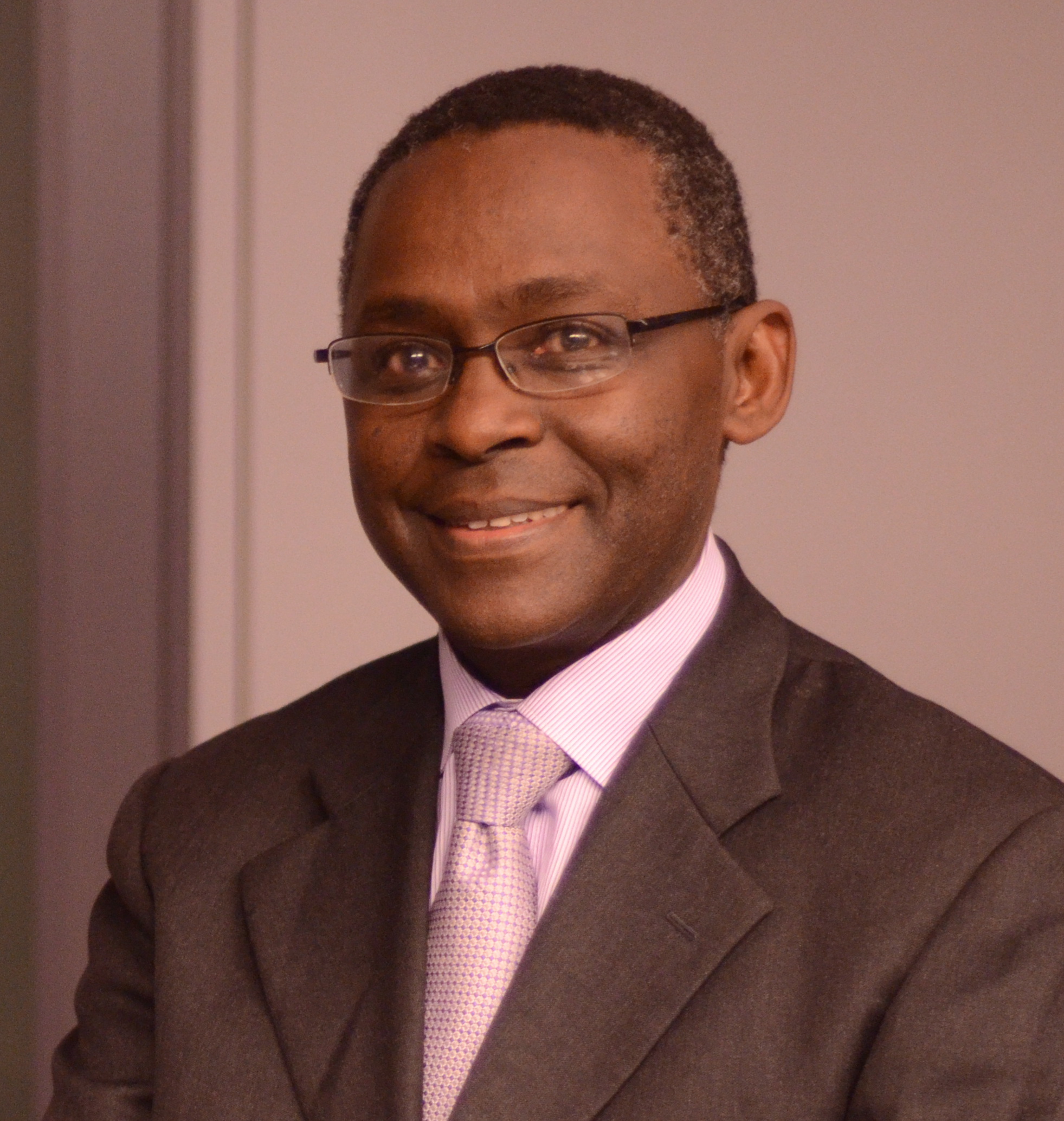 |
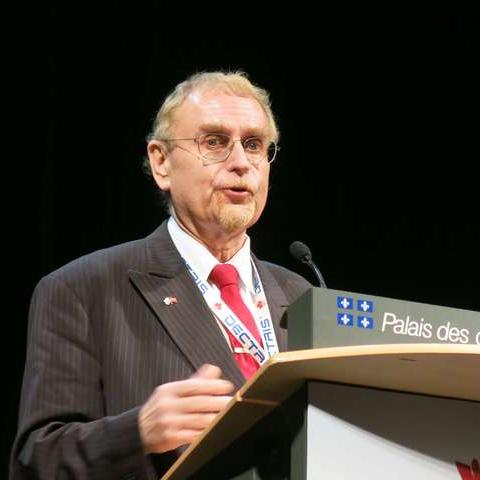 |
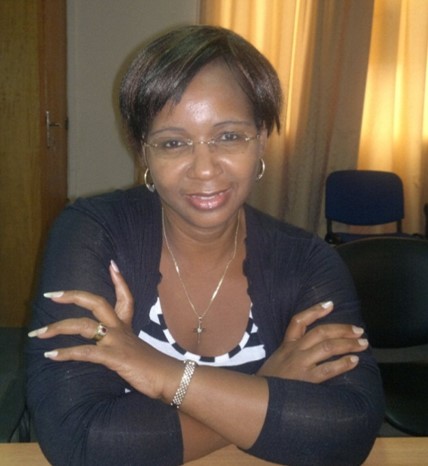 |
Welcome message from the IUCr President
On behalf of the International Union of Crystallography (IUCr) and the thousands of crystallographers it represents, I welcome you to this conference - "Crystallography for the next generation: the legacy of IYCr". I would like to express our gratitude to the co-organizers - Abdelmalek Thalal, Claude Lecomte, Michele Zema; the Moroccan Crystallographic Association; and the Academie Hassan II des Science & Techniques for hosting us in Rabat, Morocco. The IUCr is also proud and grateful for the support and cooperation of UNESCO, ICSU, TWAS and our industrial partners in putting this conference together. We are also grateful to the Moroccan delegation to the United Nations for their efforts to make our dream of an IYCr a reality.
This conference - "Crystallography for the next generation: the legacy of IYCr" - serves multiple purposes. In one sense it is the formal closing of IYCr2014, and an opportunity to review and celebrate all the good things that have happened during IYCr2014. Over the course of this conference we will have the opportunity to proudly look back at some of the many activities that have taken place over the past two years, with a special focus on crystallography in Northern Africa. However, this conference is also the opening of the IYCr Legacy - a plan to continue and build on the successes of IYCr2014. There is no reason we should stop promoting crystallography just because our International Year has run its course.
One of the goals for this conference will be to plot a course going forward, recognizing that it takes time, talent and resources to support these wonderful activities. The IUCr is exploring ways of generating funds for this purpose, such as the creation of the IYCr Legacy Fund, and welcomes opportunities to partner with others to fund future IYCr2014 Legacy activities.
My heartfelt thanks again to the organizers for putting together this wonderful program at such a great venue. I look forward to the conference, and the opportunity to work with many of you to build the Legacy of IYCr.
Marvin L. Hackert
Welcome message from the Director of TWAS
On behalf of TWAS, The World Academy of Sciences, it is my pleasure to welcome all participants in the "Crystallography for the next generation: the legacy of IYCr" conference, and to be with you through this letter. Because of other commitments, I regret that I cannot be there with you in person.
The International Year of Crystallography has made great achievements: It has raised awareness about a fundamental discipline which is scarcely known to the public, rarely a government priority, and too often forgotten by school and academic curricula. It has provided high-quality educational opportunities to students from the developing countries through the OpenLab initiative. And it has stimulated international cooperation in science through three excellent summit meetings in South-East Asia, Latin America and Africa.
With the belief that developing nations, by building strength in science and engineering, can build the knowledge and skill to address such challenges as hunger, disease and poverty, TWAS shares the same objectives as those pursued by the IUCr and UNESCO during IYCr2014. Therefore, TWAS is looking forward to the "legacy" of IYCr2014 and to being partner of the crystallographic community on this initiative.
In 2013, I met with IUCr officials Claude Lecomte, Luc Van Meervelt and Michele Zema, together with Jean Paul Ngome from UNESCO, in the preparation of activities for IYCr2014. In that meeting, we agreed that crystallography should be a prime field for focus and investment by policymakers and educators in developing nations.
TWAS and its partners offer nearly 500 fellowships per year to scientists in the developing world who want to pursue PhDs and post-doctoral research. TWAS prizes and awards are among the most prestigious given for scientific work in the developing world. The Academy distributes more than USD1.5 million in research grants every year to individual scientists and research groups. It supports visiting scientists and provides funding for regional and international science meetings. I am hopeful that more young crystallographers will take advantage of these opportunities.
Therefore I offer my congratulations on the achievements reached so far and wish every success to this conference and to the future activities connected with the IYCr legacy initiative.
Romain Murenzi
Welcome message from the Director of the Division of Science Policy and Capacity Building of UNESCO
2014 celebrated the International Year of Crystallography (IYCr2014). The year's objectives were to render crystallography accessible to everyone, and to raise awareness about the innovations achieved through crystallography and the way these applications permeate our daily lives.
Crystallography is indispensable for nurturing the scientific innovation that all countries need for their sustainable development and to build greener societies and economies. During the IYCr2014 and beyond, UNESCO and the International Union of Crystallography join forces to shine a spotlight on crystallography and to provide an opportunity for knowledge-sharing in the various areas of crystallography, particularly for countries lacking expertise in this field. In this regard, a number of open laboratories in crystallography were organized throughout the year in developing countries in order to show how crystallography works.
The message of the IYCr2014 is clear: the basic sciences, especially crystallography, are not beyond the reach of any country; crystallography brings together all scientific disciplines, making it the perfect driver to promote quality science education and to train the scientists of tomorrow. Through the International Year of Crystallography and the follow-up initiatives, the International Basic Sciences Programme (IBSP) is harnessing the considerable socio-economic benefits that crystallography can bring to the citizens of the world.
Let the efforts that were made in 2014 continue to bear fruit. Let us continue to work on the goals of the IYCr2014, which may truly be manifested in the future of the basic sciences around the world. I wish you all a fruitful "Crystallography for the next generation: the legacy of IYCr" Conference.
Maciej Nalecz
Welcome message from the Director of ICSU ROA
The International Council for Science (ICSU) Regional Office for Africa (ICSU ROA) is mandated to promote, facilitate and coordinate activities of the ICSU family in Africa, thus fulfilling ICSU's mission of strengthening international science for the benefit of society on the continent. Since its inauguration in September 2005, ICSU ROA has been engaged in activities designed to showcase ICSU's work in strengthening partnerships in international research collaboration, science for policy and advocating the universality of science. The Office aims to promote the development and strengthening of science in the context of regional priorities, and endeavours to bring international scientific activities and programmes, especially those of the ICSU family, closer to the African scientists through collaborative ventures.
ICSU ROA supports the activities and planned programmes of International Union of Crystallography (IUCr) on the continent as IUCr is one of the active ICSU International Scientific Unions in Africa. The implementation of these activities is trans-disciplinary in nature; it is also designed to cut through national and continental boundaries, while taking into account the need to foster the enhancement of science in Africa by establishing and formalising an African Crystallography Association (AfCA) - a structure that will be a fully recognized affiliate of IUCr. ICSU ROA has supported a number of IUCr programmes in the region and will continue to do so in the foreseeable future. The involvement of ICSU ROA in future activities of IUCr will include providing organisational support prior, during and after IUCr related events in the region; supporting the establishment of AfCA; as well as facilitating the interactions of regional and international crystallography communities (including those of AfCA) with other scientists, relevant networks and stakeholders in Africa through sharing of information. The Regional Office will be happy to be a partner in IUCr initiatives where it will play a pivotal role of providing guidance in identifying action agenda items as well as relevant experts and scientists from different corners of the region. As part of its commitment to promote smooth implementation of IUCr activities/programmes on the continent, the Office will avail its staff for any service that may be required, within its resource and capacity limits. ICSU ROA is prepared to support and endorse (to potential funders) proposals submitted by IUCr as well as direct the crystallography community to potential sources for funding for its programmes. The Office will also readily share information about the regional activities where IUCr can contribute, in order to maximise the scientific impact of these on the continent. ICSU ROA is honoured to take part during this "IYCr legacy" conference. The past year's activities went a long way to promote the discipline of crystallography. The Office looks forward to a fruitful collaboration with IUCr for the implementation of future scientific activities on the continent, and to the further expansion of the discipline to have a footprint on the majority of countries on the continent.
Congratulations on what has been achieved so far.
Edith Madela-Mntla
Co-chairs of the conference
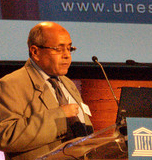 |
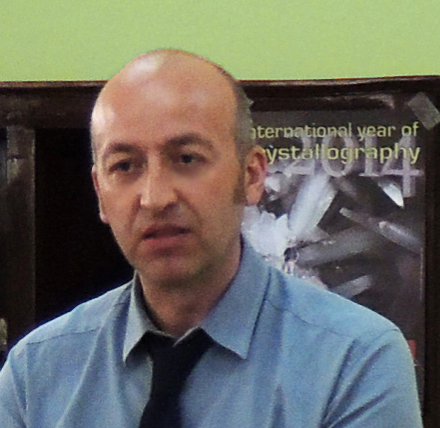 |
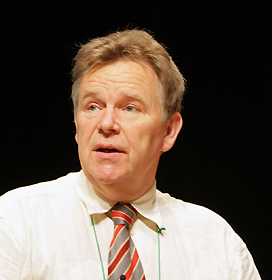 |
|
President of the Moroccan Crystallographic Association Cadi Ayyad University, Faculty of Sciences Semlalia, Marrakech - Morocco |
Project Manager for IYCr2014 International Union of Crystallography, Chester, UK and University of Pavia, Italy |
CNRS and Jean Barriol Institute Université de Lorraine Nancy, France |
Local Organizing Committee
Abdelmalek Thalal (Chair), University Cadi Ayyad - Marrakech
Abderrazzak Assani, University Mohammed V – Rabat
Moha Berraho, University Cadi Ayyad – Marrakech
Abdellah Boukhris, University Ibnou Zohr – Agadir
Lahcen El Ammari, University Mohammed V – Rabat
Mohamed El Azhari, University Cadi Ayyad – Marrakech
El Mokhtar Essassi, University Mohammed V – Rabat
Abdeslam Hoummada, Academy Hassan II of Sciences and Technology - Rabat
Amane Oueriagli, University Cadi Ayyad - Marrakech
Salah Eddine Qebbaj, University Mohammed Premier - Oujda
Mohamed Saadi, University Mohammed V - Rabat
Driss Zakaria, University Chouaïb Doukkali – El Jadida
Confirmed speakers and panelists
Session on Symmetry
Ted Janssen, U. Nijmegen, The Netherlands
Denis Gratias, CNRS, Châtillon, France
Ashwini Nangia, U. Hyderabad, India
Metin Arik, Bogaziçi University, Istanbul, Turkey
Session on Phosphates
G. Michael Blackburn, U. Sheffield, UK
Alain Ibanez, Institut Neél, CNRS, Grenoble, France
Abdelaziz El Jazouli, U. Casablanca, Morocco
Rachid Boulif, OCP group, Morocco
Sessions on IYCr outreach activities
Marvin L. Hackert, U. Texas, Austin, Texas, US - IUCr President
Maciej Nalecz, UNESCO-IBSP, Paris, France - Director of the Division for Science Policy and Capacity Building at UNESCO
Jean Paul Ngome-Abiaga, UNESCO-IBSP, Paris, France - UNESCO delegate
Daniel Nyanganyura, ICSU Regional Office for Africa, Pretoria, South Africa - ICSU Regional Office for Africa
Gautam R. Desiraju, IIS Bangalore, India - IUCr Immediate Past President (video message)
Cora Lind-Kovacs, U. Toledo, US - ACA delegate
Jennifer L. Martin, University of Queensland, Brisbane, Australia - AsCA Vice President
Andreas Roodt, U. Free State, Bloemfontein, South Africa - ECA President
Diego G. Lamas, U. Comahue, Buenos Aires, Argentina - LACA Vice President
Luc Van Meervelt, U. Leuven, Belgium - IUCr General Secretary and Tresurer; Coordinator of the IYCr crystal growing competition
Samar S. Hasnain, U. Liverpool, UK - IUCr Journals Editor-in-Chief
Giorgio Paolucci, SESAME, Allan, Jordan - SESAME Scientific Director
Masaki Takata, Spring-8, Japan, Deputy Director of RIKEN SPring-8 Center
Alison Edwards, ANSTO, Lucas Heights, Australia - ANSTO Delegate
Florence Porcher, Laboratoire Léon Brillouin, France - LLB Delegate
Colin Groom, Cambridge Crystallographic Data Centre, Cambridge, UK - CCDC Executive Director
Gerard Fauvet, Bruker, Paris, France - Director General Bruker AXS France
Dubravka Sisak Jung, DECTRIS, Baden, Switzerland - DECTRIS Delegate
Areej Abuhammad, U. Jordan, Amman, Jordan
Leopoldo Suescun, U. Montevideo, Uruguay
Richard Garratt, U. São Paulo, Brazil
Ian Williams, HKUST, Hong Kong
Gilberto Artioli, U. Padova, Italy
Graciela Diaz de Delgado, U. Los Andes, Mérida, Venezuela
Abdellah Boukhris, U. Agadir, Morocco
Session on the IUCr Initiative in Africa
Anaclet Fomethe, Rector, U. Dschang, Cameroon
Kati Coulibaly, Directeur de l'Enseignement Supérieur et de la Recherche, Abidjan, Cote d'Ivoire
Patrice Kenfack, U. Dschang, Cameroon
Rita Kakou-Yao, U. Cocody, Abidjan, Cote d'Ivoire
Hocine Merazig, U. Constantine, Algeria
Habib Boughzala, University of Tunis El Manar, Tunisia
Patricia W. Gitari, U. Nairobi, Kenya
Nzikahyel Simon, University of Uyo, Nigeria
Karimat El Sayed, AinShams University, Cairo, Egypt
Jean Jacques Anguilè, Gabon
Magatte Camara, Senegal
Delegates to the IYCr legacy conference
The following registrations have been received. This list does not include delegates who have asked to be excluded from this public list. If you have registered and do not see your name here, you may check your registration status by sending an email to iycr2014@iucr.org.
| Family name | Given name | Country | Affiliation |
|---|---|---|---|
| Bouzbib | Mohammed | Morocco | FSR |
| Chrif | Marouane | Morocco | fs Rabat Agdal |
| Sbihi | Kaoutar | Morocco | Faculté des sciences Rabat AGDAL |
| Maryam | Elmarouani | Morocco | FSR |
| Hammi | Maryama | Morocco | Faculty of Sciences - University Mohammed V - Rabat |
| Breida | Majda | Morocco | Chimie de l'environnement |
| Meziani | Djaafar | Algeria | Laboratory of Storage and Valorization of Renewable Energies, Faculty of the Chemistry, U.S.T.H.B., BP 32 El-Alia, Algiers 16111, Algeria |
| Bagtache | Radia | Algeria | Laboratory of Storage and Valorization of Renewable Energies, Faculty of the Chemistry, U.S.T.H.B., BP 32 El-Alia, Algiers 16111, Algeria |
| Azzouzi | Mohamee | Morocco | FSR |
| Manasse | Nihorimbere | Morocco | FSR Rabat |
| Benyaich | Houria | Morocco | FACULTE DES SCIENCES UNIVERSITE IBN ZOHR AGADIR |
| Kerroum | Younes | Morocco | Faculty of Sciences Rabat |
| Boulhaoua | Mohammed | Morocco | faculty of science rabat university mohammed 5 |
| Fahim | Ismail | Morocco | Laboratoire de Chimie-Physique des Matériaux, Faculté des Sciences Ben M'sik, Université Hassan II de Casablanca |
| Marrouche | Abdelkhalek | Morocco | Faculty of Sciences Ibn Zohr University |
| El Azhari | Mohamed | Morocco | Faculté des Sciences et Techniques UCAM |
| El Ghandouri | Abdelhak | Morocco | LPTA FSDM fes |
| Mansori | Mohammed | Morocco | Université Cadi Ayyad |
| Boudar | Noureddine | Morocco | faculté des sciences ben m'sick casa |
| Belkyal | Imane | Morocco | Faculté des Sciences et Techniques UCAM |
| El Ammari | Lahcen | Morocco | Laboratoire de Chimie du Solide Appliquée Faculté des Sciences, Université Mohammed V |
| Jesudoss | J. Helda Malarkodi | India | Royal university of Bhutan |
| Mestiri | Imen | Tunisia | PhD studient |
| Guzei | Ilia | United States | University of Wisconsin Madison |
| Sebhaoui | Jihad | Morocco | Faculté des Sciences de Rabat |
| Anouar | Fatna | Morocco | Chemistry and Environment |
| Izzaouihda | Safia | Morocco | FSR |
| El Hattabi | Latifa | Morocco | FSR Rabat |
| Thalal | Abdelmalek | Morocco | Université Cadi Ayyad - Marrakech |
| El Bouari | Abdeslam | Morocco | Université Hassan II de Casablanca, Faculté des Sciences Ben M'sik |
| Ouzidan | Younes | Morocco | université sidi mohamed ben abdellah |
| Diouri | Abdeljebbar | Morocco | Faculté des Sciences de Rabat |
| Ould Mohamed | Cheikh | Morocco | Physique |
| Elouadi | Brahim | France | Université de La Rochelle |
| Echihi | Siham | Morocco | faculty of science-university chouaib doukkali Eljadida |
| Bourazmi | Hind | Morocco | Faculty of sciences-University Mohammed V-Rabat |
| Mirinioui | Fatima-Ezzahra | Morocco | Université hassan 1er Settat |
| Bouhoud | Jihane | Morocco | Faculté du science |
| Laachir | Abdelhakim | Morocco | Laboratoire de Chimie de Coordination et d’Analytique (LCCA), Faculte´ des Sciences, Universite´ Chouaib Doukkali, BP 20, M-24000 El Jadida |
| Tamraoui | Youssef | Morocco | Laboratoire des Sciences des Matériaux, des Milieux et de la modélisation (LS3M), FPK Khouribga, Université Hassan 1er, Morocco |
| Louihi | Said | Morocco | doctorant chercheur à l'université hassan 1er settat |
| Karbou | Saadia | Morocco | PhD Student Univ. Hassan II FSAC Casa. |
| Abououalid | Hicham | Morocco | Mascir |
| Aaouine | Khadija | Morocco | chimie |
| Bouhsane | Naima | Morocco | FACULTY OF SCIENCE RABAT AGDAL |
| Lhimr | Siham | Morocco | chimie |
| El Aoufir | Yasmina | Morocco | Faculty of sciences-University Ibnou Tofail- Kénitra |
| Bouzian | younos | Morocco | faculté de sciences rabat agdal |
| Ngoune | Jean | Cameroon | The University of Dschang |
| Tigha | My Rachid | Morocco | Université Hassan II de Casablanca, Faculté des sciences Ben M'sik |
| Elalouani | Marouane | Morocco | Faculté des Sciences Rabat |
| Ajjammouri | Tarik | Morocco | mascir |
| Yameen | Muhammad | Pakistan | University |
| Essaghouani | Abde Hanine | Morocco | FSR |
| Hamdi | Najlaa | Morocco | University Sidi Mohamed Ben Abdellah |
| Boujrhal | Fatima Zahra | Morocco | FST/Béni Mellal |
| Tiotsop | Maurice | Cameroon | PhD Student |
| Tereshchenko | Elena | Russia Federation | NRC Kurchatov Institute |
| Cheikhrouhou | Abdelwaheb | Tunisia | Faculty of Sciences of Sfax |
| Alekseeva | Olga | Russia Federation | Shubnikov Institute of Crystallography |
| Hamlich | Meryem | Morocco | Chemistry and Environment |
| Blagov | Alexander | Russia Federation | A.V..Shubnikov Institute of Crystallography |
| Marchenkov | Nikita | Russia Federation | A.V.Shubnikov Institute of Crystallography |
| Harkati | Souad | Morocco | Chemistry and Environment |
| Saja | Souad | Morocco | sajasouad@yahoo.fr |
| Tchoffo | Martin | Cameroon | Mesoscopic and Multilayer Structure Laboratory ,University of Dschang |
| El Qacimi | Nourelyakine | Morocco | Environmental Chemistry |
| Hodeau | Jean-Louis | France | CNRS - Institut Neel, Grenoble |
| Omari | Lhaj el Hachemi | Morocco | LPTA FSDM Fez |
| Damiyine | Brahim | Morocco | Chimestry |
| Nourdine | Boukabcha | Algeria | pro |
| El Aakib | Hind | Morocco | Laboratoire de Physique du Solide et Couches Minces - FSSM |
| Kartah | Badr Eddine | Morocco | University Mohammed V, Faculty of Sciences Rabat |
| Bensalah | Hiba | Morocco | Materials, Membranes and Environnement |
| Derouich | Ghizlane | Morocco | Chimie de l'environnement |
| Abkar | Rachid | Morocco | Laboratoire des Sciences des Matériaux, des Milieux et de la modélisation (LS3M) |
| Tijani | Najib | Morocco | Faculty of sciences |
| Abderrahim | El Hat | Morocco | Faculty of Sciences RABAT |
| Moujdi | Sara | Morocco | university mohamed V |
| Mazkour | Aimad | Morocco | Faculté des sciences Rabat |
| Belmokhtar | Noureddine | Morocco | FST of Tangier |
| Arejdal | Mestapha | Morocco | Doctorant en Laboratoire de Magnétisme et Haute Energie |
| Talbi | Meryeme | Morocco | Laboratory of Chemistry Applied and Environment, University Hassan 1 Settat, Morocco |
| Amine | Moukapir | Morocco | Faculty of Sciences Ben M'sik, University of Hassan II Mohmmedia-Casablanca |
| Chaik | Mounir | Morocco | fssm |
| Ait Kerroum | Mohamed Alae | Morocco | Phd student at Faculty of Sciences Rabat |
| Essyed | Ahmed | Morocco | PhD student at the University Mohammed V, Rabat |
| Edwards | Alison | Australia | Bragg Institute, Australian Nuclear Science and Technology Organization |
| Ait Tamerd | Mohamed | Morocco | Faculté des sciences Rabat |
| Jamma | Mustapha | Morocco | UM5R |
| Lamas | Diego German | Argentina | CONICET-Universidad Nacional de Gral. San Martín |
| Makhlouk | Radouan | Morocco | Laboratoire de Physique de haute Energie et de l’Etat Condensé, Faculty of Science, University Hassan II Ain Chock, Casablanca, Morocco |
| Chabbou | Zineb | Morocco | Laboratory of High energy physics and condensed matter, Departement of Physics, Faculty of Sciences I, University Hassan II Ain chock, Casablanca |
| Beloued | Nadia | Morocco | Laboratoire de Physique de haute Energie et de l’Etat Condensé, Faculty of Science, University Hassan II Ain Chock, Casablanca, Morocco |
| Zaroual | Aziz | Morocco | chimie |
| Bakkali | Houdaifa | Morocco | faculty of sciences and techniques of tangier |
| Naceur Abouloula | Cheyma | Morocco | fssm, uca |
| Boukheir | Sofia | Morocco | Université Cadi Ayyad |
| Zouhair | Fatima Zahrae | Morocco | Laboratory of Agroresources and Process Engineering, University Ibn Tofail Faculté of Sciences |
| Nyanganyura | Daniel | South Africa | ICSU ROA |
| Ibanez | Alain | France | Institut Néel, CNRS |
| Kati-Coulibaly | Séraphine | Ivory Coast | Director Enseignement Supérieur et Recherche of Cote d’Ivoire |
| Ngome Abiaga | Jean-Paul | France | UNESCO |
| Boukhris | Abdellah | Morocco | Université Ibn Zohr, Agadir |
| Hasnain | Samar S. | United Kingdom | University of Liverpool |
| Nangia | Ahwini | India | University of Hyderabad |
| Fomethe | Anaclet | Cameroon | University of Dschang |
| El Sayed | Karimat | Egypt | AinShams University, Cairo |
| Naji | Abdennasser | Morocco | AMAQUEN Institute |
| Paolucci | Giorgio | Jordan | SESAME (Synchrotron-light for Experimental Science and Applications in the Middle East) |
| Porcher | Florence | France | Laboratoire Léon Brillouin |
| Arik | Metin | Turkey | ogaziçi University, Istanbul |
| Jung | Daniel Y. | Switzerland | ETH |
| Rouchdi | Mustapha | Morocco | Faculté des Sciences de Rabat |
| Sisak Jung | Dubravka | Switzerland | DECTRIS Ltd. |
| Azrour | Mohamed | Morocco | FST Errachidia |
| Hadouchi | Mohammed | Morocco | Laboratoire de Chimie du Solide Appliquée ,Faculté des Sciences Rabat |
| Nid-Bahami | Abdelaaziz | Morocco | FSR |
| El Mekkaoui | Najlae | Morocco | Faculty of Sciences - University Mohammed V - Rabat |
| Taibi | M'hamed | Morocco | Univesity of Mohammed V Rabat |
| Boujibar | Ouassim | Morocco | LMVR,FST-Tanger, Maroc |
| Adardour | Mohamed | Morocco | Laboratoire de Chimie Moléculaire |
| Ben Soumane | Yahya | Morocco | Laboratoire de Chimie Moléculaire |
| Oulad Elhmaidi | Zakaria | Morocco | Mohammed V University- Rabat |
| Chafi | Fatima Zahra | Morocco | Fsr |
| Haj Abdallah | Anissa | Tunisia | Association Tunisienne de Cristallographie |
| Ouaatta | Said | Morocco | Faculté des sciences Rabat |
| Dardouri | Rachida | Morocco | FST-Fès |
| Bensaid | Hanane | Morocco | université Hassan II casablanca |
| Dyakova | Yulia | Russia Federation | Institute of Crystallography RAS |
| El Kasmi | Achraf | Germany | Bielefeld University |
| Aboulhassane | Abderrahmane | Morocco | univ el jadida |
| Bounou | Yassine | Morocco | univ el jadida |
| Hami | Wafa | Morocco | faculty of science-university cadi ayyad |
| Haddad | Amor | Tunisia | Institut Supérieur des Sciences Appliquées et Technologie de Mahdia |
| Maza | Soumeya | Algeria | Université des frères mentouri Constantine1 |
| Arbind | Arbind Prasad | India | Indian Institute of Technology,Guwahati |
| Kandri Rodi | Youssef | Morocco | FST Fès |
| El Ouasif | Latifa | Morocco | Faculté des Sciences de Rabat |
| Ellouz | Mohamed | Morocco | Faculté des sciences Rabat |
| Souikny | Ahmed | Morocco | University of Abdelmalek Essaadi |
| Arhzaf | Said | Morocco | university Moulay Ismail-Meknes-Morocco |
| Moubarik | Yassine | Morocco | phD Student |
| Saputra | Andri | Indonesia | Student at Polytechic Institute of Nuclear Technology |
| Jahid | Mohcine | Morocco | 2624277611 |
| Hlimi | Zakia | Morocco | unnivesité Hassan I,settat |
| Mahhouti | Zakaria | Morocco | MAScIR and FSR |
| Abraime | Brahim | Morocco | Moroccan Foundation for Advanced Science Innovation and Research- MASciR |
| El Hat | Abderrahim | Morocco | University of Mohammed V, Faculty of Sciences |
| El Maalam | Khadija | Morocco | Faculté des sciences et la Fondation MASCIR - Rabat |
| Ben Ali | Meriem | Morocco | Mascir |
| Benhiti | Ridouan | Morocco | Ibn Tofail University |
| Mouflih | Khadija | Morocco | FSR Rabat |
| Tahiri | Nabiha | Morocco | Cadi Ayyad University, Faculty of Sciences Semlalia |
| Ait Laasri | Hicham | Morocco | Faculté des Sciences Semlalia-Université Cadi Ayyad Marrakech |
| Sajieddine | Mohammed | Morocco | Univ. Sultan Moulay Slimane, Béni-Mellal |
| Cheikhrouhou-Koubaa | Wissem | Tunisia | Faculty of Sciences of Sfax |
| Rakitina | Tatiana | Russia Federation | NRC "Kurchatov Institute" |
| Stremoukhov | Sergey | Russia Federation | National Research Centre "Kurchatov Institute" |
| Essalhy | Said | Morocco | doctorant faculté des sciences rabat |
| Martin | Jennifer | Australia | University of Queensland |
| Višnjevac | Aleksandar | Croatia | Ruđer Bošković Institute |
| Lehmann | Christian W | Germany | Max-Planck-Institut für Kohlenforschung |
| Lipkowski | Janusz | Poland | Cardinal Stefan Wyszynski University in Warsaw, Faculty of Maathematics and natural Sciences |
| Berraho | Moha | Morocco | Cadi Ayyad University |
| Janssen | Ted | Netherlands | University of Nijmegen |
| Gratias | Denis | France | IRCP, UMR 8249, ENSCP PARIS |
| Đaković | Marijana | Croatia | University of Zagreb |
| Ben Smida | Youssef | Tunisia | faculté des sciences de Tunis |
| Blay Kwaku Sarfo | Nevil | Ghana | STUDENT AND YOUTH FOUNDATION |
| Heinemann | Udo | Germany | Max Delbrueck Center for Molecular Medicine Berlin |
| Ramasami | Ponnadurai | Mauritius | University of Mauritius |
| Suescun | Leopoldo | Uruguay | Universidad de la República, Facultad de Química |
| Camara | Magatte | Senegal | Université Assane Seck de Ziguinchor |
| Adiguzel | Osman | Turkey | Firat University |
| Dardar | Fatima Ezzahraa | Morocco | Solid state chemistry |
| Crystal | Govindan | India | professor |
| Hassine | Ayoub | Morocco | University Hassan II of Casablanca |
| Van Meervelt | Luc | Belgium | KU Leuven |
| Boughzala | Habib | Tunisia | Faculty of Sciences Tunis |
| Lind-Kovacs | Cora | United States | The University of Toledo |
| Ahmed | Maqsood | Pakistan | Department of Chemistry, The Islamia University of Bahawalpur, 63100, Pakistan. |
| Yaacoubi | Hind | Morocco | LCOCE, Faculté des Sciences Ben M'Sik Casablanca |
| Schorr | Susan | Germany | Helmholtz Centre Berlin for Materials and Energy |
| Tarantino | Serena C. | Italy | University of Pavia |
| Hovestreydt | Eric | Germany | Bruker |
| Agbenyega | Jonathan | United Kingdom | IUCr |
| Tinant | Bernard | Belgium | Universite Catholique Louvain |
| Ghanemi | Soumia | Algeria | university |
| Moughaoui | Fatiha | Morocco | Faculté des Sciences Ben M'sik, Université HassanII Casablanca |
| Amardo | Nadia | Morocco | Faculté des Sciences Ben M'sik, Université HassanII Casablanca |
| Loubbidi | Leila | Morocco | Faculté des Sciences Ben M'sik, Université HassanII Casablanca |
| Özgen | Özen | Turkey | Turkish National Crystallographic Association |
| Garratt | Richard | Brazil | University of São Paulo |
| Yao | Kakou Rita Carolina Angora | Ivory Coast | unversité félix houphouët- boigny |
| Cheriti | Abdelkrim | Algeria | POSL Laboratory |
| Hamsi | Nour El Houda | Morocco | Faculté des sciences de Rabat |
| Khmiyas | Jamal | Morocco | Université Mohammed V - Facultè des sciences Rabat |
| Depmeier | Wulf | Germany | Kiel University |
| Doudouh | Abdelatif | France | Laboratoire CRM2 univérsité de Lorraine |
| Pradon | Juliette | United Kingdom | Cambridge Crystallographic Data Centre (CCDC) |
| Artioli | Gilberto | Italy | University of Padova |
| Garcia-Granda | Santiago | Spain | University Oviedo |
| Chebbi | Hammouda | Tunisia | University of Monastir, Tunisia |
| de Boissieu | Marc | France | CNRS SIMAP |
| Siddiqui | Kafeel Ahmad | India | Faculty of Chemical Science, Shri Ramswaroop Memorial University, Lucknow-Deva Road, Barabanki-225003, U.P., India |
| Jamal Eddine | Oumaima | Morocco | universite hassan 2, mohamadia/ faculte des sciences ben m'sik casablanca |
| Kumar | Dilip | India | CSIR-IGIB |
| Saha | Abhisek | India | Tufanganj college Under University Of North Bengal,Derjeeling,India |
| Ajarroud | Asmaa | Morocco | crystallography |
| Guesmi | Abderrahmen | Tunisia | Université Tunis El Manar |
| Elhachmi | Abdelhadi | Morocco | HASSAN 1er (FST SETTAT) |
| Lecomte | Claude | France | CRM2 , Universite de Lorraine |
| Amami | Mongi | Saudi Arabia | king khaled university |
| Soury | Raoudha | Tunisia | Etudiant |
| Abuhammad | Areej | Jordan | University of Jordan |
| Kheireddine | Aziz | Morocco | Laboratory of chemistry and physics of materials - university of Hassan II de casablanca |
| Shankar | Madan Kumar | India | University of Mysore |
| Kruashvili | Lali | Georgia | I.Beritashvili center of Experimental Biomedicine |
| Pochkhidze | Nino | Georgia | Ilia State University, I.Beritashvili center of Experimental Biomedicine |
| Orayech | Brahim | Spain | Universityt of the basque country |
| Hackert | Marvin | United States | University of Texas at Austin |
| Ramli | Youssef | Morocco | Medicinal Chemistry Laboratory, Faculty of Medicine and Pharmacy, Rabat Institute, Mohammed V University-Rabat |
| Lamrhari | Samiha | Morocco | Université Hassan II Casablanca/ FSBM |
| Raji | Marya | Morocco | MASCIR |
| Bellemjid | Najwa | Morocco | applied Chemistry |
| Kuzel | Radomir | Czech Republic | Charles University in Prague |
| Mouhammed | Tourar | Morocco | Faculté des sciences Rabat |
| Sharpe | Andrea | United Kingdom | IUCr |
| Lamrous | Laila | Morocco | CHEMISTRY : Solid materials |
| El Jazouli | Abdelaziz | Morocco | Hassan II University-Casablanca (Morocco) and Wake Forest University, Winston-Salem, NC (USA) |
| Blackburn | George Michael | United Kingdom | University of Sheffield |
| Simon | Nzikahyel | Nigeria | Dept. of Chemistry, University of uyo, Nigeria |
| Anefnaf | Ikram | Morocco | university mohammed v rabat-agdal |
| Idrissi Noury | Salma | Morocco | Université Mohammed V Faculté des Sciences Rabat Agdal |
| Abudunia | Absulmalik | Morocco | Mohammed V University |
| El Fal | Mohammed | Morocco | Laboratoire de Chimie Organique Hétérocyclique, URAC 21, Pole de Compétences Pharmacochimie, Université Mohammed V |
| Ayed | Brahim | Tunisia | Faculté des Sciences de Gabès, université de Gabès Tunisie |
| Ahmina | Wafaa | Morocco | university mohammed v rabat-agdal |
| Benhsina | Elhassan | Morocco | University Mehemmed V Rabat |
| Bouraima | Adam | Gabon | Université des Sciences et Techniques de Masuku |
| Sekkati | Mouaad | Morocco | faculty of science - université mohammed v - agdal rabat |
| Debbabi | Mongi | Tunisia | Association Tunisienne de Crystalligraphie |
| Benmoussa | Dounia | Morocco | ESITH |
| Tadout | Mohamed | Morocco | Faculté des sciences rabat |
| Kenfack Tsobnang | Patrice | Cameroon | University of Yaoundé I |
| Fettouche | Souad | Morocco | ESITH |
| Karim | Chourti | Morocco | universite mohamed I Oujda |
| Ettayk | Anouar | Morocco | faculté des sciences ain chock , laboratoire physique des hautes énergies et informatique scientique |
| Jaouani | Hajar | Morocco | ESITH |
| Makala | Himesh | India | SASTRA University |
| Djuraev | Jamoliddin | Uzbekistan | Student |
| Sair | Said | Morocco | universite hassan II faculté des sciences ben m'sik |
| El Aamrani | Moulay Abdelaziz | Morocco | Laboratoire des Sciences des Matériaux, des milieux et de la modélisation (LS3M), FPK, Khouribga. Université Hassane I |
| Bougdid | Yahya | Morocco | Université Mohammed 5 Rabat |
| Mekhzoum | Mohamed El Mehdi | Morocco | MASCIR |
| Asmaa | Marchoud | Morocco | university hassan II- faculty of science ben m'ssik |
| Farnane | Youssef | Morocco | faculté des sciences agdal |
| Ouhammou | Badr | Morocco | fsk |
| Tanane | Omar | Morocco | Laboratoire Physico-chimie des matériaux appliqués faculté des Sciences Ben M'SIK Université Hassan II de Casablanca |
| Radid | Mohamed | Morocco | Hassan II University |
| Nassiri | Abdelhaq | Morocco | Laboratoire de Chimie des Matériaux et de l’Environnement (FST Marrakech) |
| Ennaciri | Yassine | Morocco | UNIVERSITE CHOUAIB DOKKALI FS EL JADIDA |
| Mouahid | Fatima Ezzohra | Morocco | Association Marocaine de Cristallographie |
| Sebbar | Nada Kheira | Morocco | chimie |
| Gourai | Khadija | Morocco | Faculty of Science Ben M'Sik |
| Allam | Khadija | Morocco | faculty of science Ben M'sik |
| Elasri | Ouahid | Morocco | Université Mohamed Premier, Laboratoire de biologie des plantes et microorganismes |
| Sayah | Jamal | Morocco | Faculty of Sciences Oujda Morocco |
| El Hayal | Zineb | Morocco | FSR |
| Ed-Daoudy | Nisrine | Morocco | FSR |
| Abdouss | Jaouad | Morocco | University of SIDI MOHAMMED BEN ABDELLAH FEZ |
| Manzali | Rajae | Morocco | Techniques Analysis and Quality Control |
| Jilal | Issam | Morocco | UMP Oujda |
| Yamni | Khalid | Morocco | Faculy of sciences Meknès |
| Lgaz | Hassane | Morocco | Ibn Tofail University, F. of science |
| Bourmada | Dalel | Algeria | université de khenchela |
| Saouti | Abdelkbir | Morocco | Laboratoire Génie des procédés et environnement |
| Izanzar | Ilyasse | Morocco | Laboratoire de Chimie des Matériaux et de l'Environnement FSTG Marrakech |
| Karym | Halima | Morocco | Faculté de sciences Ben M'sik Université Hassan II |
| Alhakmi | Ghaleb | Morocco | FSR |
| Harmouzi | Asmaa | Morocco | universite My Ismail meknes |
| El Alaoui-Belghiti | Hanan | Morocco | université chouaib doukkali. Faculté des sciences; Departement de chimie. El Jadida. |
| Fakhreddine | Rachid | Morocco | faculté des sciences ben m'sik |
| Aboulkassim | Abdeljabar | Morocco | Physique |
| Moutatouia | Meryem | Morocco | Université Hassan II |
| Laknifli | Abdellatif | Morocco | FPTaroudant, University Ibn Zohr |
| Mohammed Ahmed | Reham | Sudan | Khartoum University |
| Ibrahim | Rana | Sudan | Khartoum University |
| Abdalrahman | Randa Mustafa | Sudan | botonest |
| Saadi | Mohamed | Morocco | Université Mohammed V- Rabat |
| Mustafa Moomen | Talal Mohammed | Sudan | sudanese |
| Abdelrahman | Mohamed Salah Mohamed | Sudan | Sudanese |
| Abdallah | Omnia | Sudan | sudanese |
| Abdelrhman | Marwa | Sudan | female |
| Aharbil | Youssef | Morocco | PhD Student |
| Zakaria | Driss | Morocco | Universty Chouaib DOUKKALI |
| Belhabra | Mustafa | Morocco | Université Hassan II Casablanca , faculté des sciences ben M'sik ,département de chimie |
| Fauvet | Gérard | France | Bruker AXS SAS |
| Ahmed | Awad Musa Ibrahim | Sudan | sudanese |
| Zaraq | Asmaa | Morocco | université hassan II casablanca faculté des sciences Ben M'sik |
| Deschamps | Dominique | France | RDM-ROW Publications |
| Naimi | Youssef | Morocco | Faculty of Sciences of Ben M'sik, Hassan II Universiy of Casabalanca |
| Tbib | Bouazza | Morocco | university |
| Ait Haddouch | Mohammed | Morocco | university hassan 2 casablanca faculty of science ben m'sik , chemistry department |
| Benmokhtar | Said | Morocco | University Hassan II of Casablanca, Faculty of Sciences Ben M'Sik Casablanca |
| Elbahari | Ghizlane | Morocco | Université Hassan II Casa faculté des sciences ben m'sik |
| Roodt | Andreas | South Africa | Univ of the Free State |
| Diaz de Delgado | Graciela | Venezuela | Universidad de Los Andes |
| Nasr | Samia | Tunisia | chemistry |
| Celik | Omer | Turkey | TUCR |
| Harmaoui | Abdallah | Morocco | Etudiant chercheur en chimie organique hétérocyclique |
| Padmanabhan | Srinivasan | India | Anna University :University College of Engineering:Panruti |
| Bachar | Abdellatif | Morocco | Faculté des sciences Ben M'sik |
| Qabaqous | Omar | Morocco | chimie |
| Abdelgader | Noon | Sudan | Sudanese |
| Chari | Abdelwahed | Morocco | Laboratoire de Physico-Chimie des Matériaux Appliques (LPCMA), Faculté des Sciences Ben MSik, Université Hassan II de Casablanca, Maroc. |
| Kassou | Said | Morocco | PhD student Physics Laboratory of Materials and Modeling Systems( LP2MS) Physics Department Faculty of sciences Moulay Ismail University Meknes |
| Rayyam | Ismail | Morocco | Faculté des Sciences Ben M'Sik |
| El Mrabet | Rajae | Morocco | Faculté des sciences Meknés |
| Asnaoui | Hassan | Morocco | Faculté des sciences Meknés |
| Ali Abdalgaffar Alhag | Abdalgaffar | Sudan | mining engineer |
| Gitari | Patricia | Kenya | University of Nairobi |
| Es-soufi | Hicham | Morocco | faculté des sciences Meknés |
| Ouahbi | Hicham | Morocco | Université Hassan II Casablanca/ FSBM |
| Baba | Abderrahim | Morocco | universite hassan ii casablanca morocco |
| Benkhaldoun | Zouhair | Morocco | Université Cadi Ayyad, Oukaimeden Observatory |
| Jaffal | Soufiane | Morocco | University Hassan II of Casablanca |
| Khouchaf | Asmea | Morocco | University Hassan II of Casablanca |
| Boulif | Rachid | Morocco | OCP-SA |
| El Qortobi | Najwa | Morocco | University of Hassan II Casablanca |
| Jebrane | Yassine | Morocco | University Hassan II of Casablanca |
| El Mokhtari | Kawtar | Morocco | University of Hassan II Casablanca |
| Zema | Michele | United Kingdom | IUCr |
No results were found
Confirmed sponsors
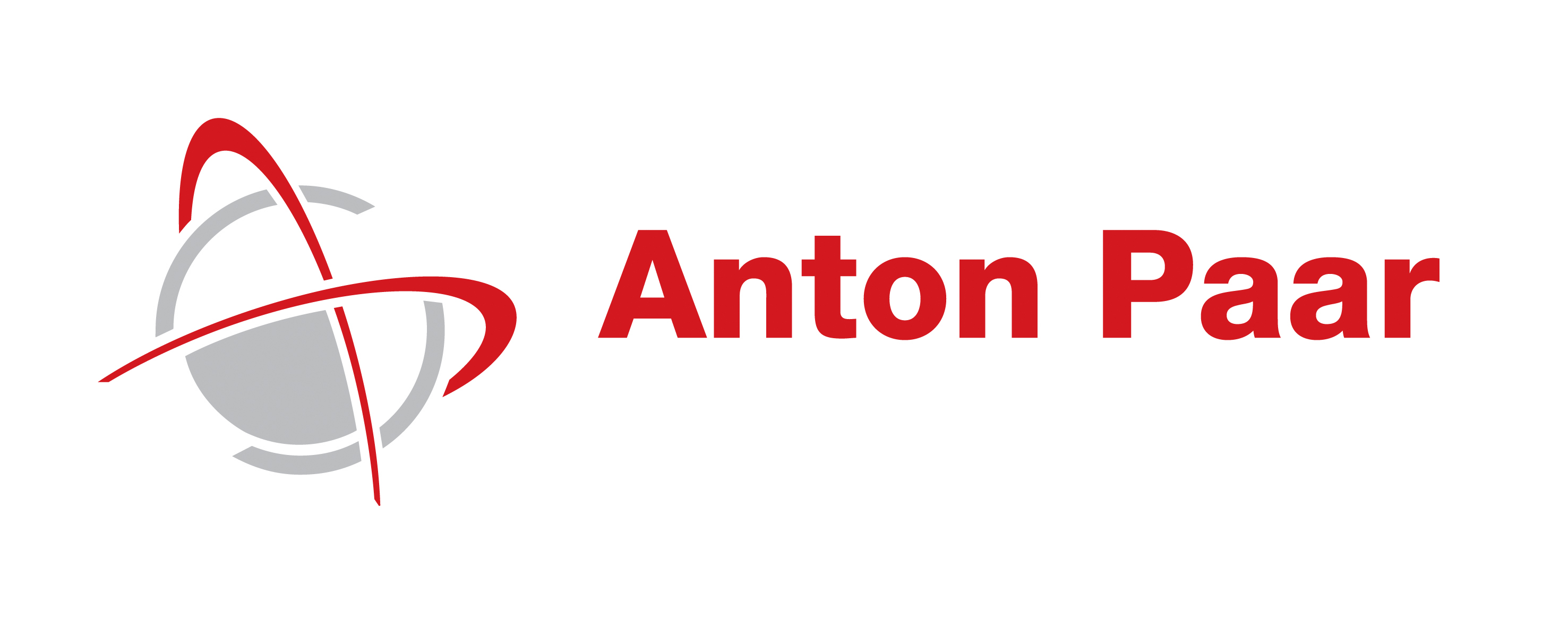 |
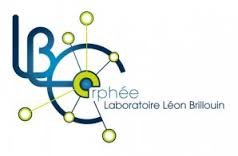 |
Invitation
The success of this event strongly depends on the involvement of the entire crystallographic enterprise, including delegates from academia, industry, research and governmental institutions. It is only though a joint effort that we can build sustainable actions to build capacity and improve the educational offer to the next generation of crystallographers.
Please feel free to contact the organizers at iycr2014@iucr.org if you are interested in taking part in this conference as a sponsor.
Opportunities will include:
- a 10-minute slot in the programme for an oral contribution;
- exhibition space for the duration of the conference (size and furniture to be communicated soon);
- your company logo on all materials related to the conference;
- distribution of promotional material and giveaways in the delegate bags or common stands;
- welcome reception refreshments, lunches, conference dinner (with signage).
Venue
Hassan II Academy of Science and Technology
Km 11, Avenue Mohammed VI
Rabat, Morocco
Web site: http://www.academie.hassan2.sciences.ma/
How to get to Rabat
Rabat is the capital and the third largest city of the Kingdom of Morocco. One of the country’s four imperial cities. The urban population of Rabat is approximately 650,000 (2010), with a total metropolitan population of over 1.8 million. It is located on the Atlantic Ocean and the river Bou Regreg. The city is an attractive destination that was recently awarded second place in "Top Travel Destinations of 2013”.
Rabat is accessible by plane through the Rabat-Salé International Airport. Alternatively, the Mohammed V International Airport in Casablanca is less than 2 hours away by train.
Lunches
Since there are no restaurants nearby the conference venue, the Organizing Committee is providing lunches on 23 and 24 April. This will be at 20 Euros/person and vouchers can be bought at the registration desk.
Arranging your travel and stay in Rabat ?
The Organizing Committee has made an agreement with the Habti Voyage Tourist Agency to help participants arrange their flights and accommodation. Please feel free to contact them. Do not forget to mention you are participating in the IYCr Legacy Conference and copy Prof. Thalal in all the correspondence with the agency.
HABTI VOYAGE AGENCY
159, Bd, Med V, Gueliz - Marrakech - 4000 - Morocco
Contact persons: AMEDIOUNE MUSTAPHA & MOHAMED CHRAÏBI
Phone: +212 524431250 / +212 661628193
FAX: +212 524431697
Email: contact@habtivoyage.com and thalal@uca.ma (always use both addresses)
Web site: http://habtivoyage.com
Tourist information
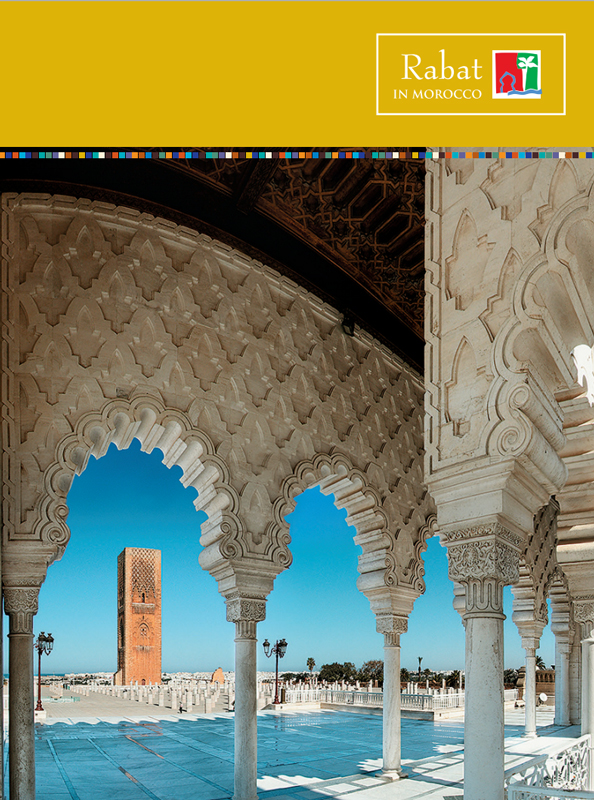 Download the brochure "Rabat in Morocco" of the Moroccan National Tourist Office
Download the brochure "Rabat in Morocco" of the Moroccan National Tourist Office



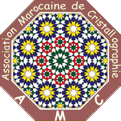
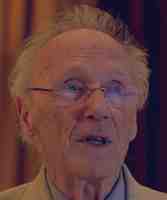 Ted Janssen
Ted Janssen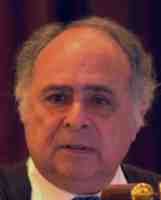 Denis Gratias and Marianne Quiquandon
Denis Gratias and Marianne Quiquandon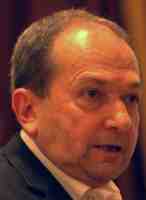 The use of local fivefold symmetry in Islamic tilings started in the 11th century. Examples of such tilings are discussed and the rules employed in these tilings are presented. It is demonstrated how a periodic pattern can be transformed into a locally aperiodic Penrose tiling pattern which most efficiently solves the difficult problem of the mathematical aperiodic tiling. Most remarkably, these tilings match with crystal diffraction patterns which exhibit fivefold symmetry. Inevitably, this topic reminds us of the flowering of scientific brilliance in Islam from the ninth to the thirteenth century - a period often described as the "golden age" of Islamic science.
The use of local fivefold symmetry in Islamic tilings started in the 11th century. Examples of such tilings are discussed and the rules employed in these tilings are presented. It is demonstrated how a periodic pattern can be transformed into a locally aperiodic Penrose tiling pattern which most efficiently solves the difficult problem of the mathematical aperiodic tiling. Most remarkably, these tilings match with crystal diffraction patterns which exhibit fivefold symmetry. Inevitably, this topic reminds us of the flowering of scientific brilliance in Islam from the ninth to the thirteenth century - a period often described as the "golden age" of Islamic science. Ashwini Nangia
Ashwini Nangia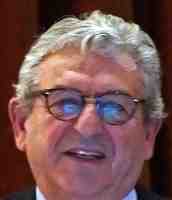 Gérard Fauvet, Bruker France
Gérard Fauvet, Bruker France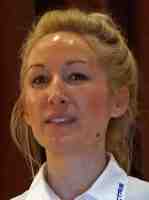 Dubravka Sisak Jung
Dubravka Sisak Jung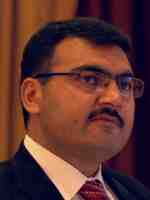 Crystallography in Pakistan: Current Status and Future Prospects
Crystallography in Pakistan: Current Status and Future Prospects Crystallography in Turkey
Crystallography in Turkey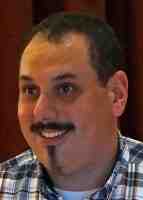 Crystallography in Uruguay
Crystallography in Uruguay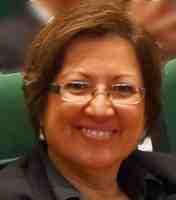 Development and status of crystallography in Venezuela
Development and status of crystallography in Venezuela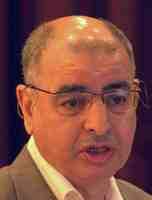 Abdelaziz El Jazouli
Abdelaziz El Jazouli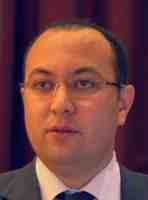 Phosphate, which is the first source of all products containing phosphorus, is mainly used as fertilizer. At the beginning of the last century, demand for phosphates and fertilizers increased rapidly because of the growth in world population. Many phosphate industries have been developed to ensure global food security. This talk will give an overview of OCP's experience in the phosphate industry, which started with mining operations in Khouribga and continues with the transformation of phosphate at Safi and Jorf Lasfar chemical platforms. We will also present OCP's activities and mixed products of phosphates and derivatives like DAP (binary fertilizer), TSP (full phosphate fertilizer), MAP (binary fertilizer consisting of phosphorus and nitrogen agents) and NPK (ternary fertilizer). OCP also makes products based on high performance and a sustainable agriculture approach. The last part will be reserved to the OCP innovation and R&D. We will give information about:
Phosphate, which is the first source of all products containing phosphorus, is mainly used as fertilizer. At the beginning of the last century, demand for phosphates and fertilizers increased rapidly because of the growth in world population. Many phosphate industries have been developed to ensure global food security. This talk will give an overview of OCP's experience in the phosphate industry, which started with mining operations in Khouribga and continues with the transformation of phosphate at Safi and Jorf Lasfar chemical platforms. We will also present OCP's activities and mixed products of phosphates and derivatives like DAP (binary fertilizer), TSP (full phosphate fertilizer), MAP (binary fertilizer consisting of phosphorus and nitrogen agents) and NPK (ternary fertilizer). OCP also makes products based on high performance and a sustainable agriculture approach. The last part will be reserved to the OCP innovation and R&D. We will give information about: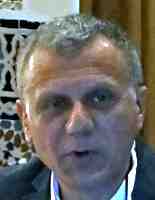 A. Ibanez, J. Zaccaro and B. Ménaert
A. Ibanez, J. Zaccaro and B. Ménaert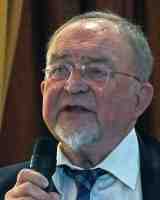 G. Michael Blackburn, Matthew W. Bowler, Yi Jin and Jon Waltho
G. Michael Blackburn, Matthew W. Bowler, Yi Jin and Jon Waltho In this IYCr Legacy Lecture, I shall seek to justify my lecture title claim from both ends. From a prebiotic beginning I shall ask: How did planet Earth get enough phosphorus to support life? There is no place more appropriate than Morocco from where to survey whether earth has sufficient reserves of phosphorus to sustain life into the next millennium. Then from today's knowledge of the amazing diversity of functions for phosphate in cellular organization and activity, I shall ask: How do we now perceive the uniqueness of phosphate for its multiple roles in life? Today, we know that the central paradox of phosphate in the biosphere is the contrast between the amazing stability of phosphate esters that is fundamental for their role in the integrity of our genes set against the secure compartmentalization of key metabolites to avoid life-threatening dispersal in our hydrosphere. Phosphate gives DNA its amazing stability, with a half-life of the phosphate diester backbone greater than the life of our universe. That contrasts with the remarkable power of enzymatic phosphorylation/dephosphorylation to make possible the control of cellular behaviour on the millisecond time scale needed for cellular activity. [I shall ask, if time permits, whether there was any alternative to phosphate for evolution of terrestrial life.]
In this IYCr Legacy Lecture, I shall seek to justify my lecture title claim from both ends. From a prebiotic beginning I shall ask: How did planet Earth get enough phosphorus to support life? There is no place more appropriate than Morocco from where to survey whether earth has sufficient reserves of phosphorus to sustain life into the next millennium. Then from today's knowledge of the amazing diversity of functions for phosphate in cellular organization and activity, I shall ask: How do we now perceive the uniqueness of phosphate for its multiple roles in life? Today, we know that the central paradox of phosphate in the biosphere is the contrast between the amazing stability of phosphate esters that is fundamental for their role in the integrity of our genes set against the secure compartmentalization of key metabolites to avoid life-threatening dispersal in our hydrosphere. Phosphate gives DNA its amazing stability, with a half-life of the phosphate diester backbone greater than the life of our universe. That contrasts with the remarkable power of enzymatic phosphorylation/dephosphorylation to make possible the control of cellular behaviour on the millisecond time scale needed for cellular activity. [I shall ask, if time permits, whether there was any alternative to phosphate for evolution of terrestrial life.]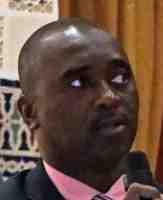 Crystallography in Ivory Coast
Crystallography in Ivory Coast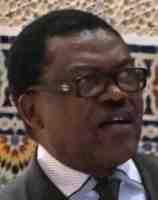 Crystallography in Cameroon
Crystallography in Cameroon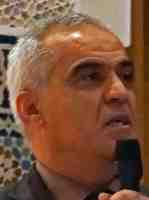 Crystallography in Tunisia
Crystallography in Tunisia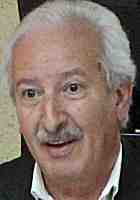 Activities of Algerian crystallographers in 2014-2015
Activities of Algerian crystallographers in 2014-2015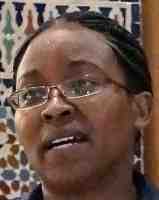 Current situation of crystallography in Kenya
Current situation of crystallography in Kenya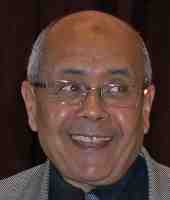 Crystallography in Morocco
Crystallography in Morocco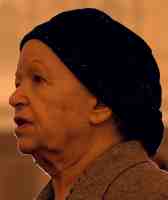 Crystallographic activities in Egypt during IYCr2014
Crystallographic activities in Egypt during IYCr2014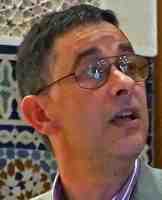 Crystallographic teaching and research experiences in DR Congo
Crystallographic teaching and research experiences in DR Congo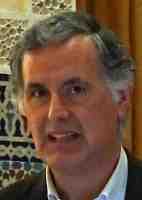 G. Paolucci
G. Paolucci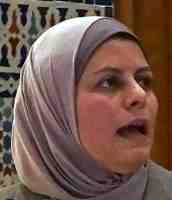 Areej Abuhammad
Areej Abuhammad Alison Edwards
Alison Edwards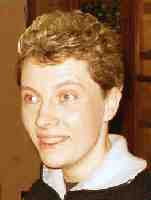 Florence Porcher
Florence Porcher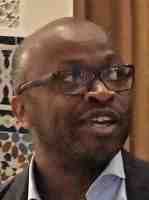 Jonathan Agbenyega
Jonathan Agbenyega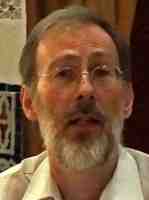 Brian McMahon
Brian McMahon